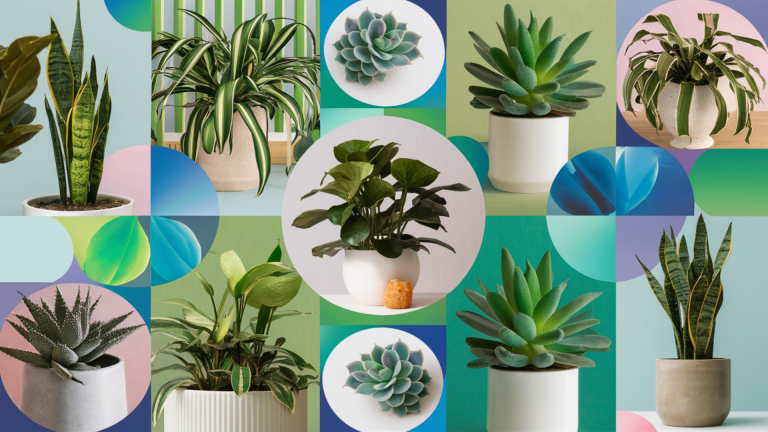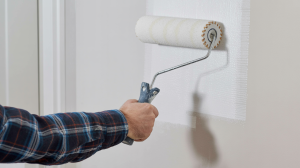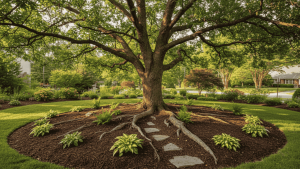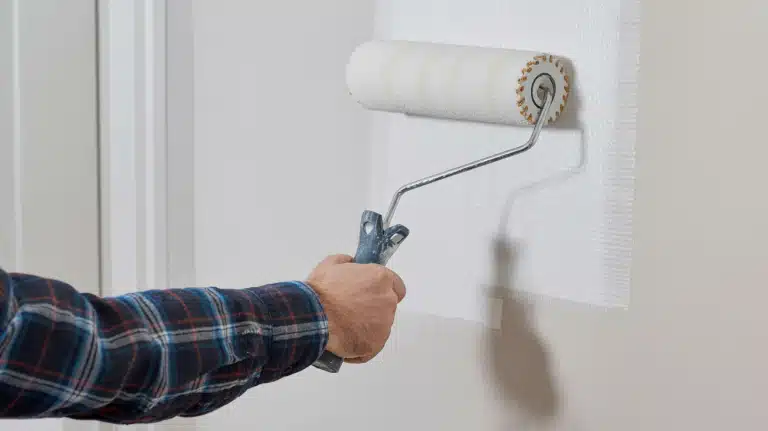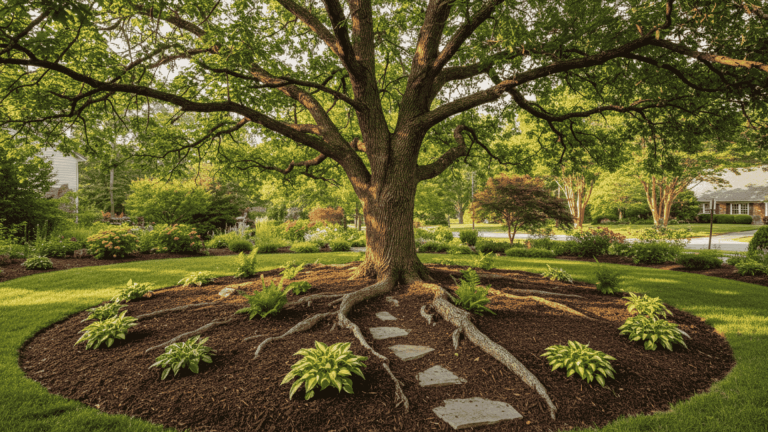Finding the right office plants shouldn’t be hard. I know exactly how you feel—stuck in a bland workspace, wondering which plants will actually survive under fluorescent lights. After testing dozens of plants in my own office over the past five years, I’ve created this guide to help solve your workspace greenery problems.
In this article, I’ll tell you all the plants that thrive in office conditions and provide detailed instructions on how to keep them alive. You’ll discover options for:
- Low-light corners
- Busy people who forget to water
- Small desks with limited space
- Offices with no windows
As a plant enthusiast who killed plenty of plants before finding success, I promise these suggestions work in real office settings—no more wasting money on plants that die within weeks. Let’s transform your workspace into something you’ll look forward to walking into every morning.
The Best Office Plants That Are Easy to Keep and Look Great
Let’s check the plants that thrive in office conditions and bring life to your workspace. I’ve ranked these based on how well they survive typical office conditions, such as low light, dry air, and occasional neglect. These plants not only stay alive but also look good with minimal effort.
1. Snake Plant
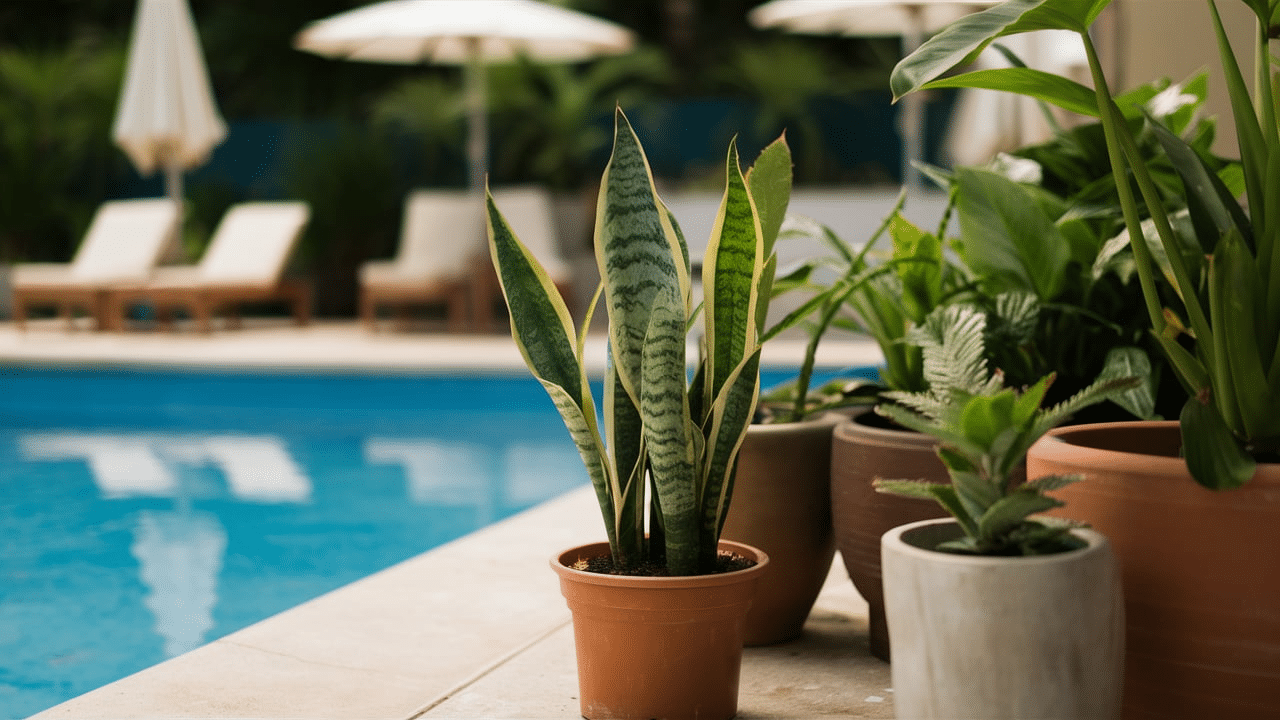
I love my snake plant! It sits in the corner of my office where sunlight barely reaches. I water it once every two weeks, and it still looks perfect. Its tall, striped leaves stand up straight and add a nice touch to my space
Snake plants (also known as Mother-in-Law’s Tongue) are nearly impossible to kill and can survive for weeks without water. They come in various sizes and leaf patterns, ranging from tall, spiky varieties to shorter, compact ones.
Why it’s great for offices:
- Can survive in fluorescent lighting with no windows
- Releases oxygen at night, unlike most plants
- Filters out formaldehyde from office furniture
- Lives for many years with minimal care
2. ZZ Plant
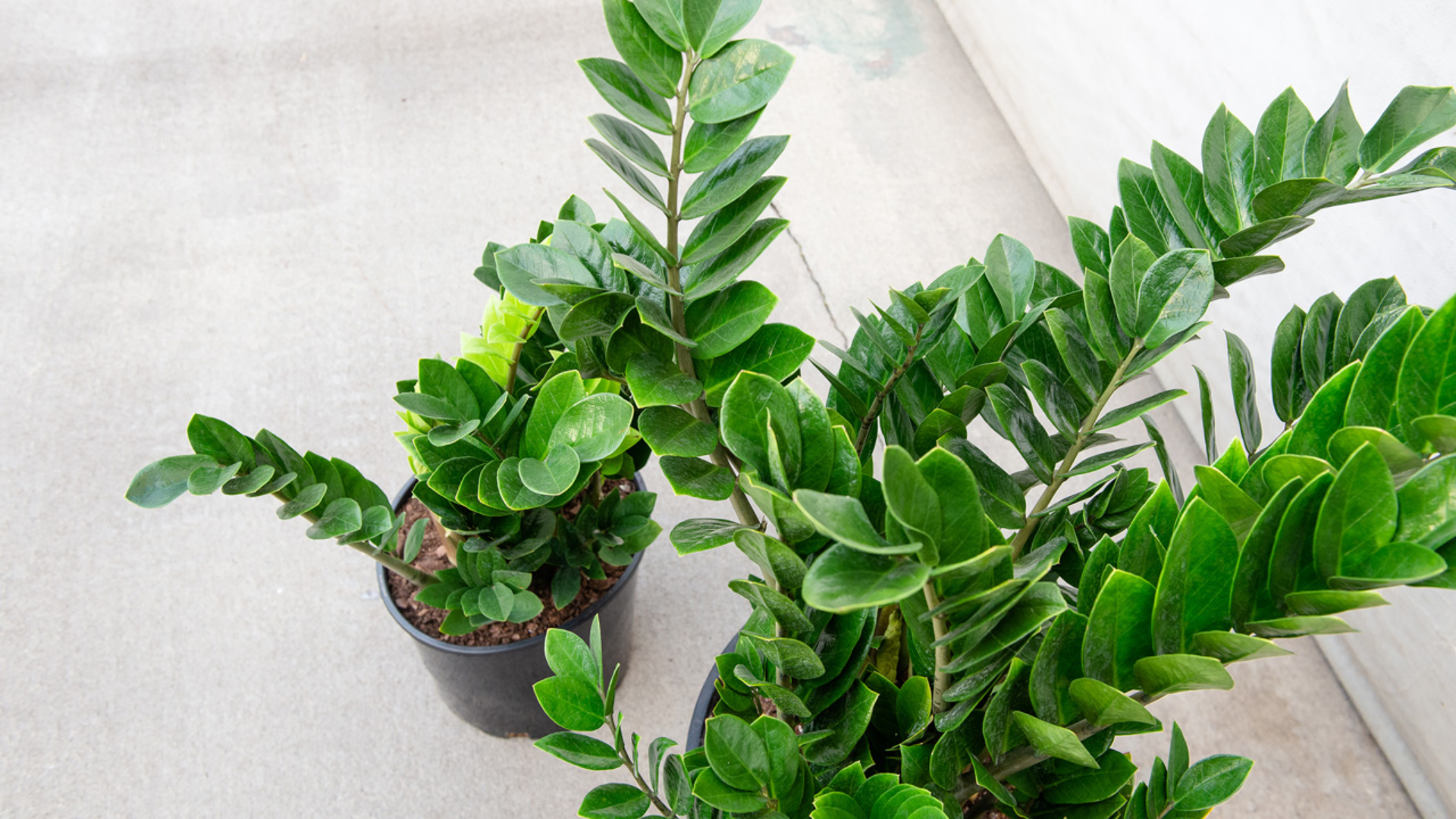
My ZZ plant has survived my longest business trips. It has shiny, dark green leaves that look waxy and clean. I water it once a month, and it continues to grow. If you often forget to water plants, this one will forgive you. Its glossy appearance makes it look plastic—guests often touch it to check if it’s real!
Why it’s great for offices:
- Can go months without water in emergencies
- Thrives in low to medium indirect light
- Rarely attracts pests or diseases
- Grows slowly, staying compact for years
3. Pothos
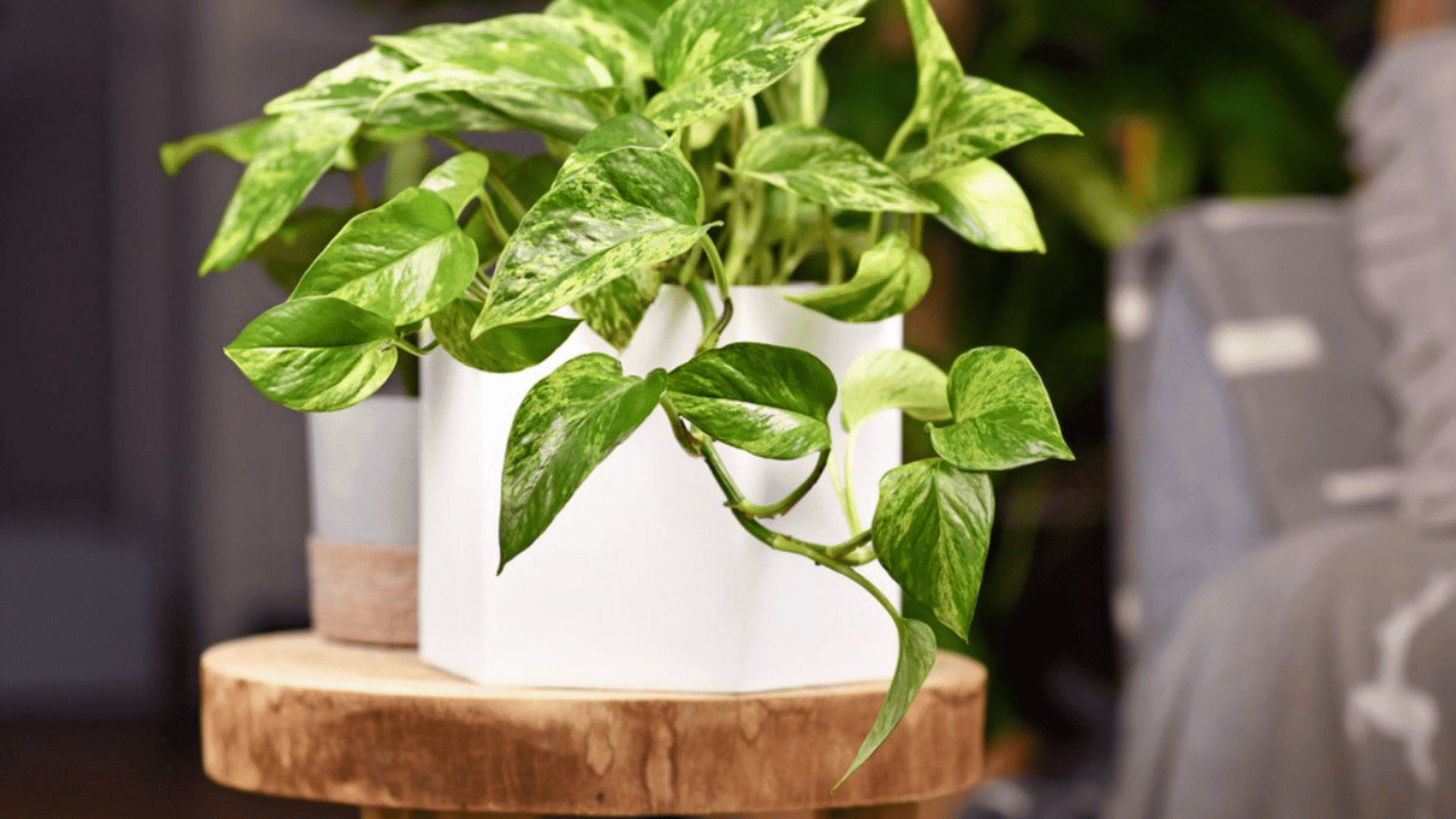
I have a golden pothos on my bookshelf, and its vines now reach down two feet! The heart-shaped leaves are available in green or with yellow markings. When a stem becomes too long, I cut it and place it in water to create a new plant. Pothos vines can grow up to 10 feet long indoors.
Why it’s great for offices:
- Grows in almost any light condition except direct sun
- Tells you when it needs water by slightly drooping leaves
- Can be trained to climb up small trellises or walls
- Acts as a natural air purifier, removing toxins
4. Lucky Bamboo
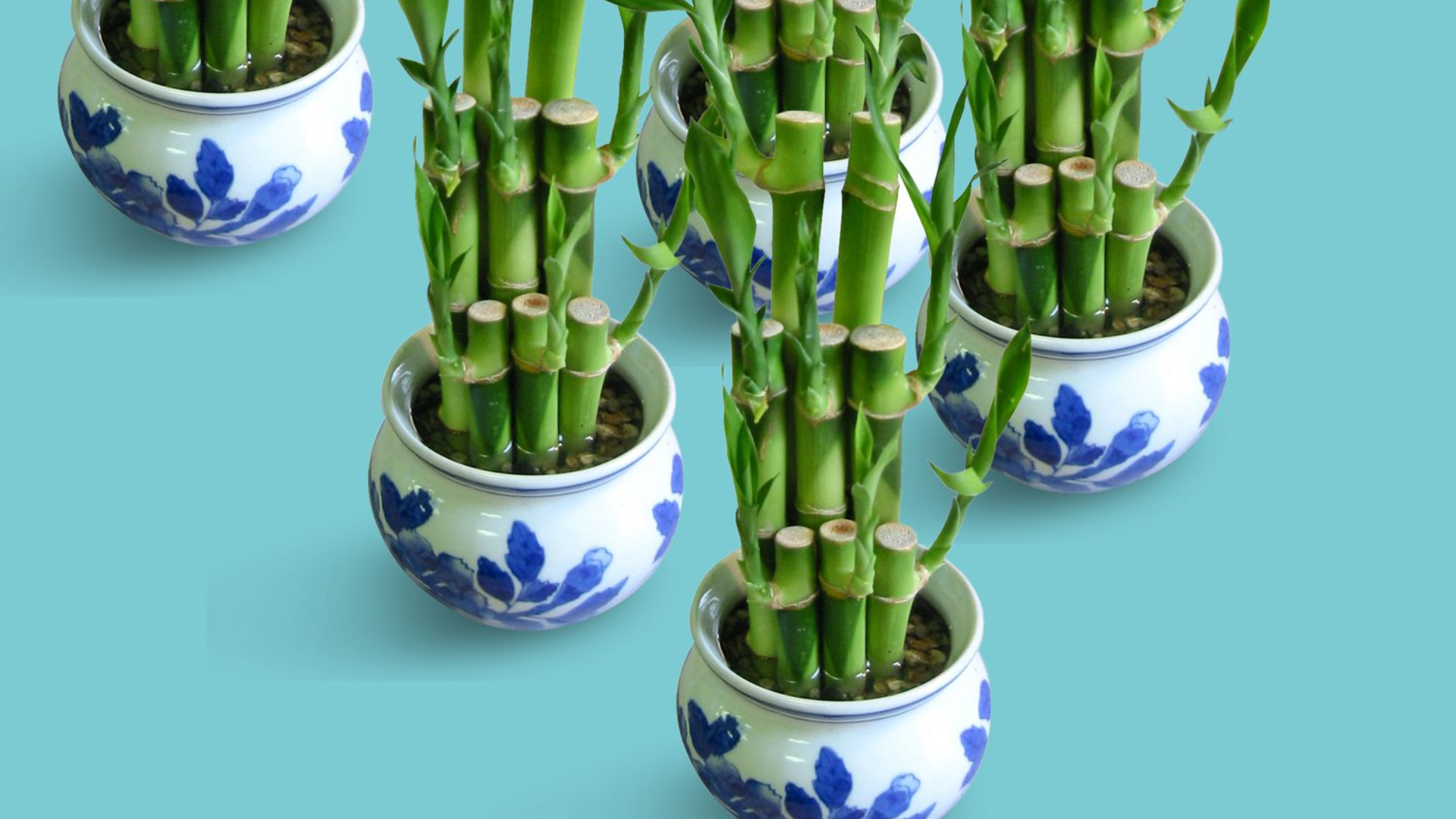
My lucky bamboo sits in a glass jar with just water and small stones. It adds a calm feel to my desk. Some of my coworkers got one after seeing mine. You need to change the water every few weeks. Despite its name, lucky bamboo isn’t actually bamboo—it’s a type of Dracaena.
Why it’s great for offices:
- Survives in low to moderate indirect light
- Can be arranged in creative, decorative containers
- Symbolizes good fortune and positive energy
- Stays small and manageable for years
5. Aloe Vera
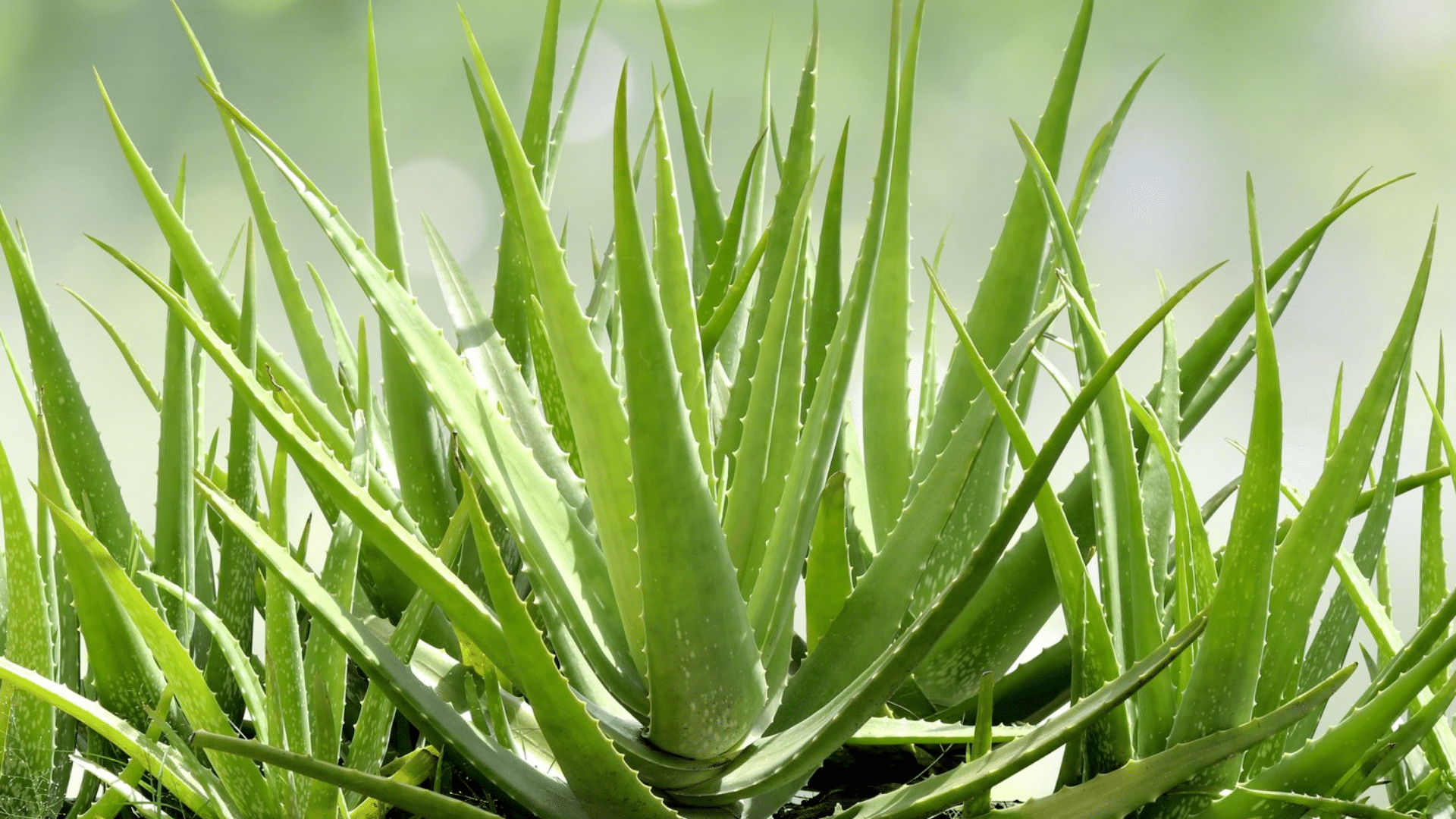
I keep an aloe vera plant on my windowsill. It needs more light than other office plants, but it’s worth it. When I get a paper cut or dry skin, I break off a small piece and use the gel inside. It’s like having a living first aid kit! Aloe vera plants can live for many years and will produce “pups” or baby plants around their base, which can be separated and replanted in new pots.
Why it’s great for offices:
- Provides soothing gel for minor burns, cuts, or skin irritation
- Needs watering only every 3-4 weeks
- Indicates overwatering by developing brown spots
- Helps monitor air quality (develops brown spots in polluted air)
6. Peace Lily
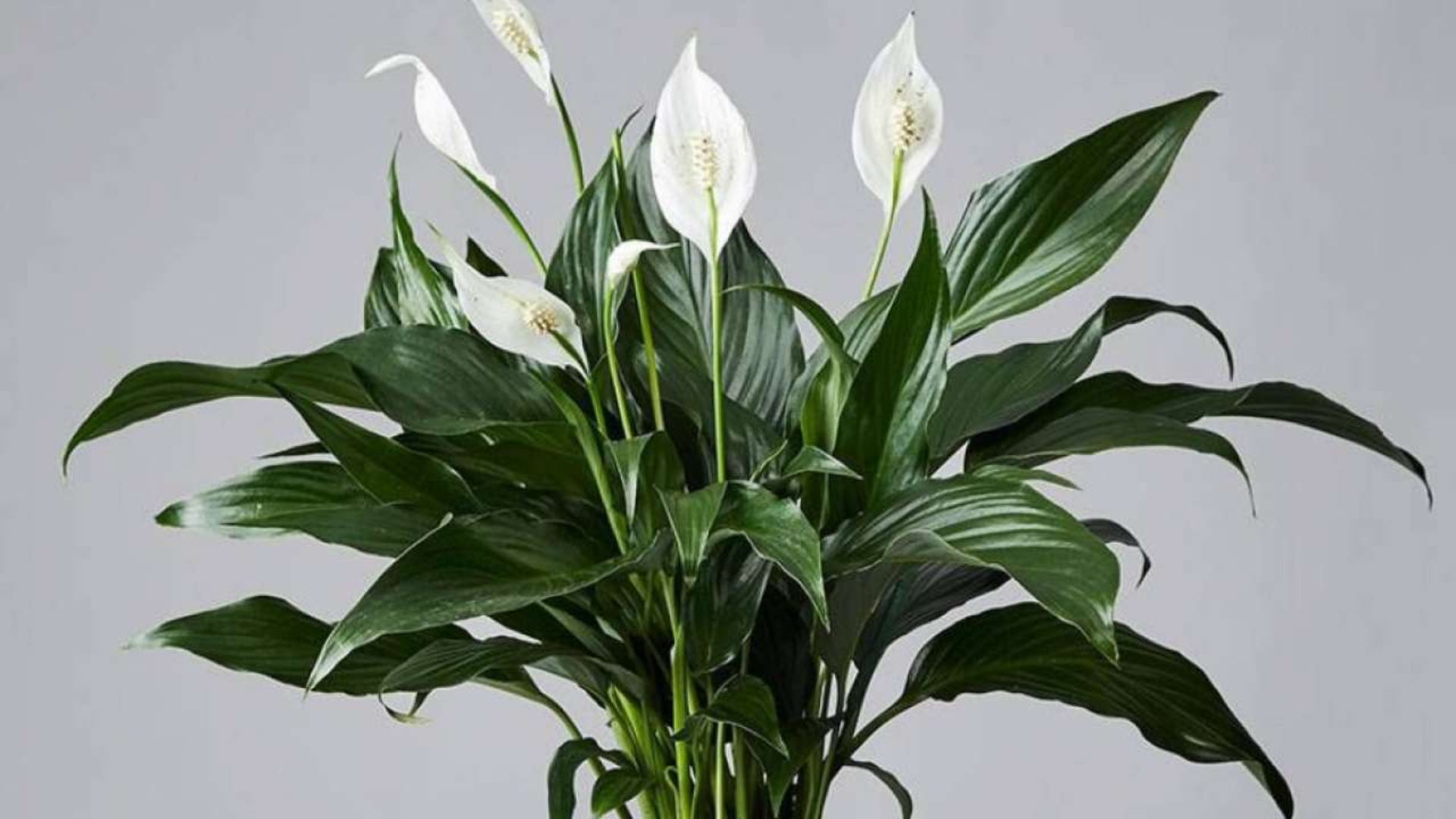
My peace lily tells me when it needs water by drooping its leaves. After I water it, it perks back up within hours. It makes white flowers that last for weeks. The dark green leaves look clean and tidy in my office. Peace lilies are known for their elegant white ‘flowers’ (actually modified leaves called spathes) that rise above the foliage and last for weeks.
Why it’s great for offices:
- Dramatically signals when it needs water by drooping, but recovers quickly
- Thrives in low to medium indirect light
- Handles typical office humidity levels well
- Compact size fits perfectly on desks or floor corners
7. Spider Plant
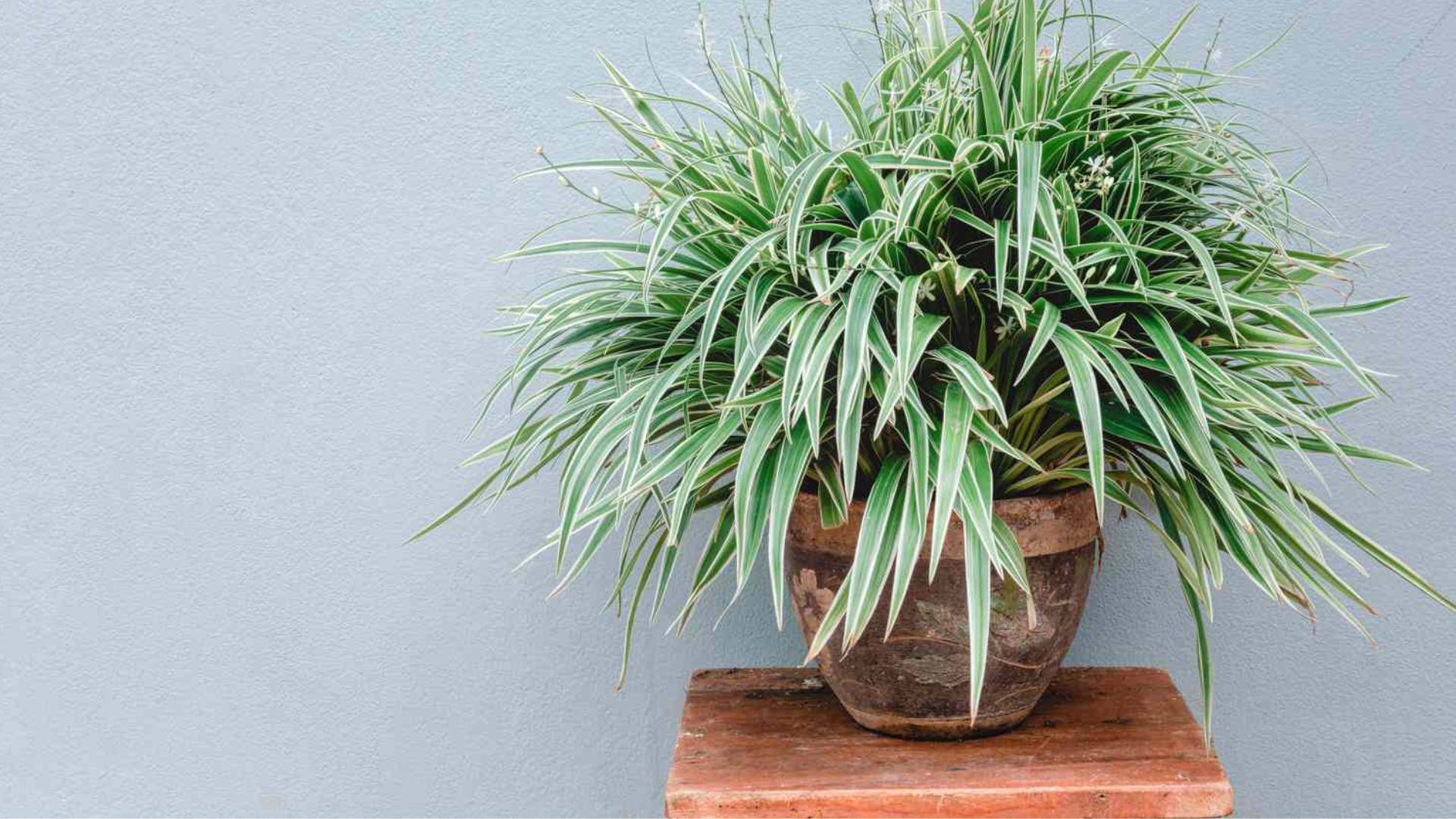
My spider plant hangs near my window and makes baby plants that dangle from stems. I’ve given these babies to five coworkers so far. It’s fun to watch the plant make little copies of itself. Spider plants have arching, green and white-striped leaves that grow from a central point.
Why it’s great for offices:
- Produces babies you can snap off to grow new plants
- Tolerates irregular watering and varying light conditions
- Removes common office air pollutants
- Grows well under fluorescent lighting
- Pet-friendly and non-toxic if you bring your dog to work
8. Jade Plant

My jade plant is small but has thick stems and round leaves. It grows very slowly, which makes it ideal for a desk plant. I’ve had mine for three years, and it’s still compact. Its fat leaves store water, so it rarely needs a drink. Jade plants (Crassula ovata) are sometimes referred to as “money plants” or “lucky plants” in certain cultures, symbolizing financial prosperity. They can live for decades and eventually grow into small tree-like structures with thick, woody stems.
Why it’s great for offices:
- Survives long weekends and vacations without water
- Prefers to dry out completely between waterings
- Can live in the same small pot for years
- Tolerates dry office air better than most plants
- Develops a bonsai-like appearance as it ages
9. Cast Iron Plant
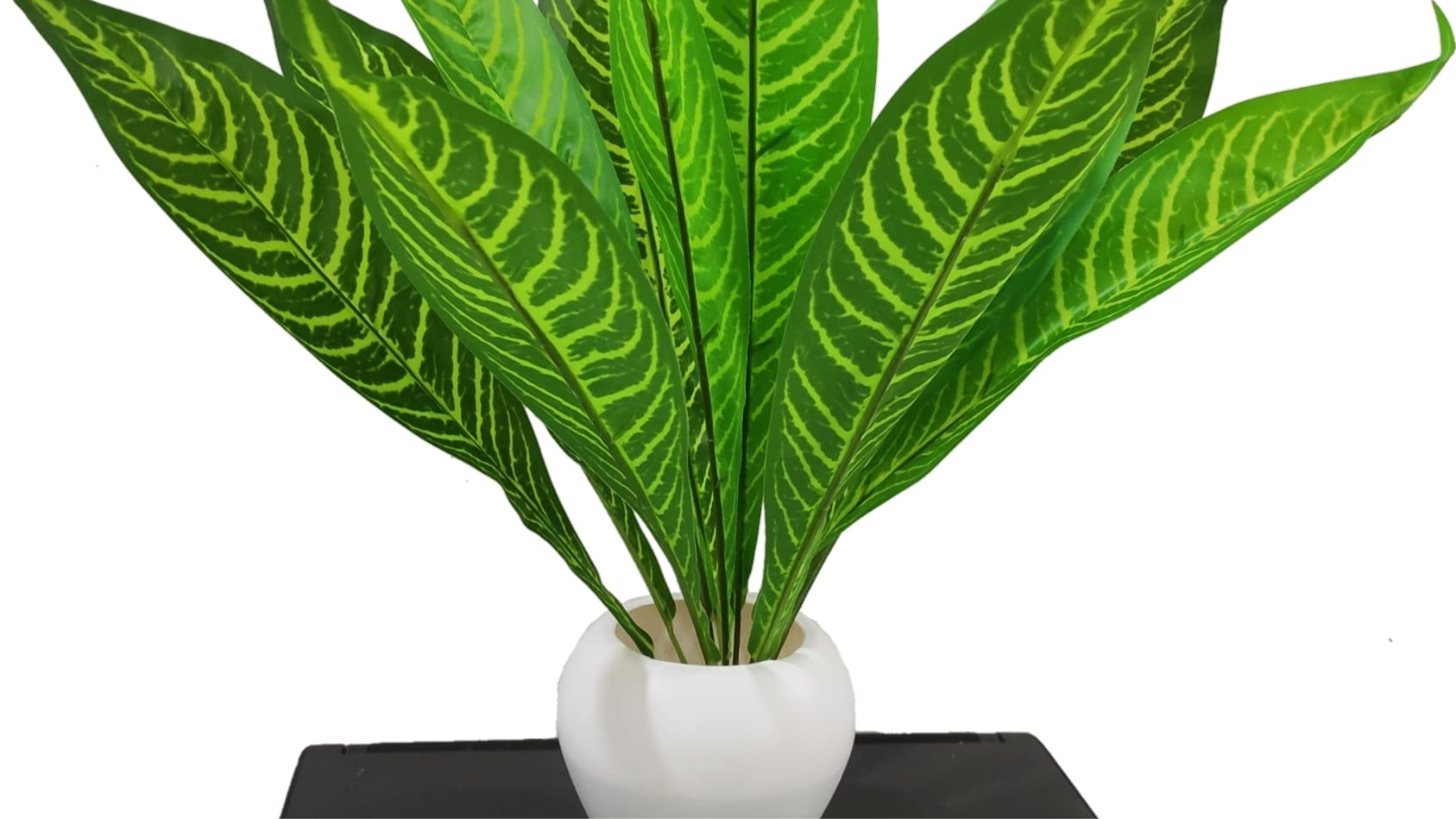
I have a cast-iron plant in the worst spot in my office—a dark corner far from any window. It still grows! The wide, dark leaves look nice year-round. I call it my “can’t kill it” plant. The cast iron plant (Aspidistra elatior) earned its name from its incredible durability. Its broad, glossy leaves grow directly from the soil and can reach up to 2 feet long.
Why it’s great for offices:
- Thrives in very low light, where most plants would die
- Tolerates neglect, irregular watering, and poor conditions
- Resistant to insects and diseases
- Handles temperature fluctuations and drafts
- Lives for many years with minimal care
10. Rubber Plant
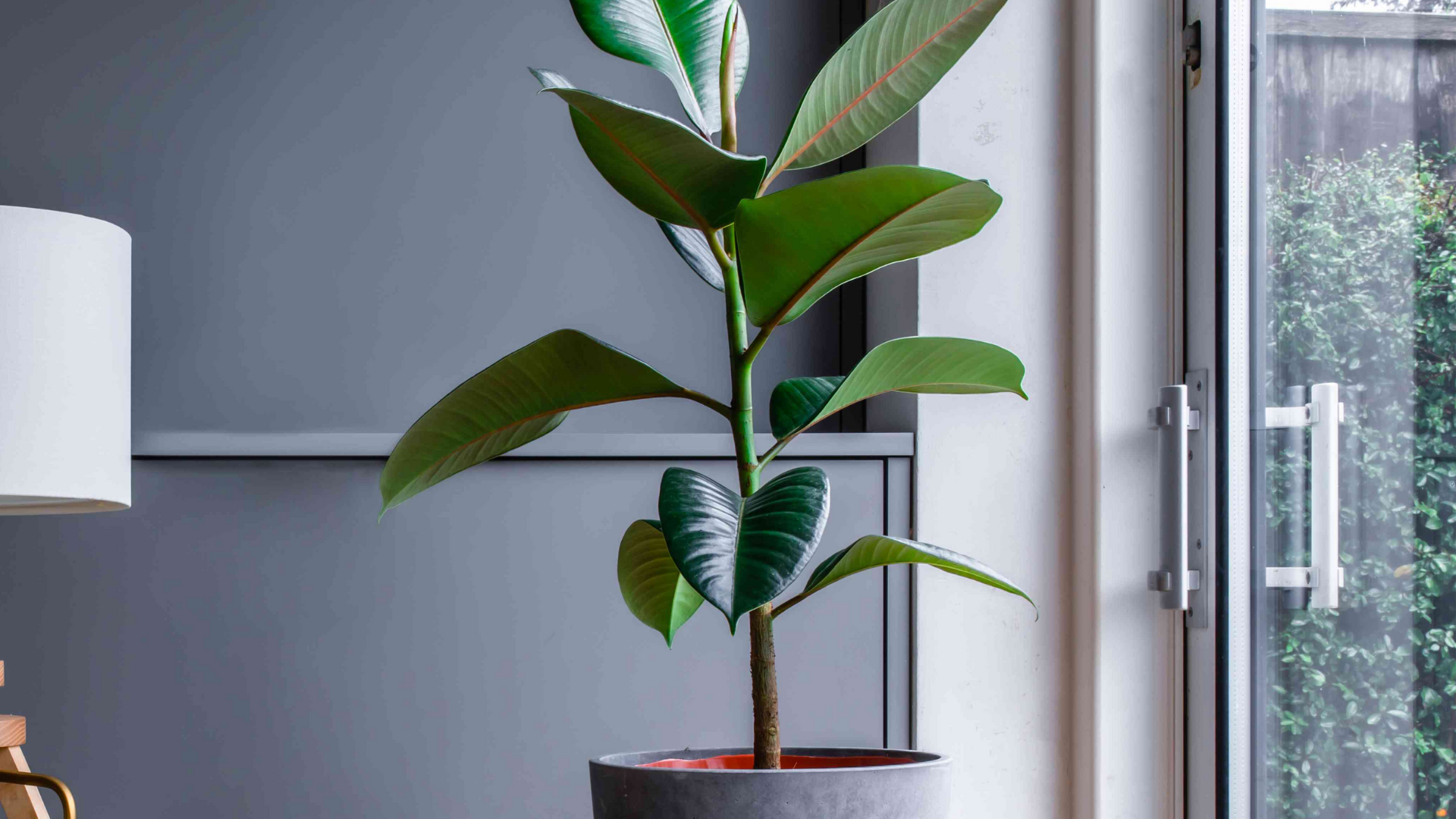
My rubber plant adds a bold look to my office with its large, shiny leaves. It grows straight up, so it doesn’t take much space. I wipe the leaves clean once a month to keep them shiny. The rubber plant (Ficus elastica) gets its name from the latex it produces when damaged. Its thick, leathery leaves can be deep green, burgundy, or variegated depending on the variety. They can grow quite tall indoors (6-10 feet) but are slow enough to manage.
Why it’s great for offices:
- Makes a dramatic statement with minimal floor space
- Purifies air by removing formaldehyde and other toxins
- Tolerates moderate neglect and some drought
- Shiny leaves reflect light and brighten dark corners
11. Philodendron
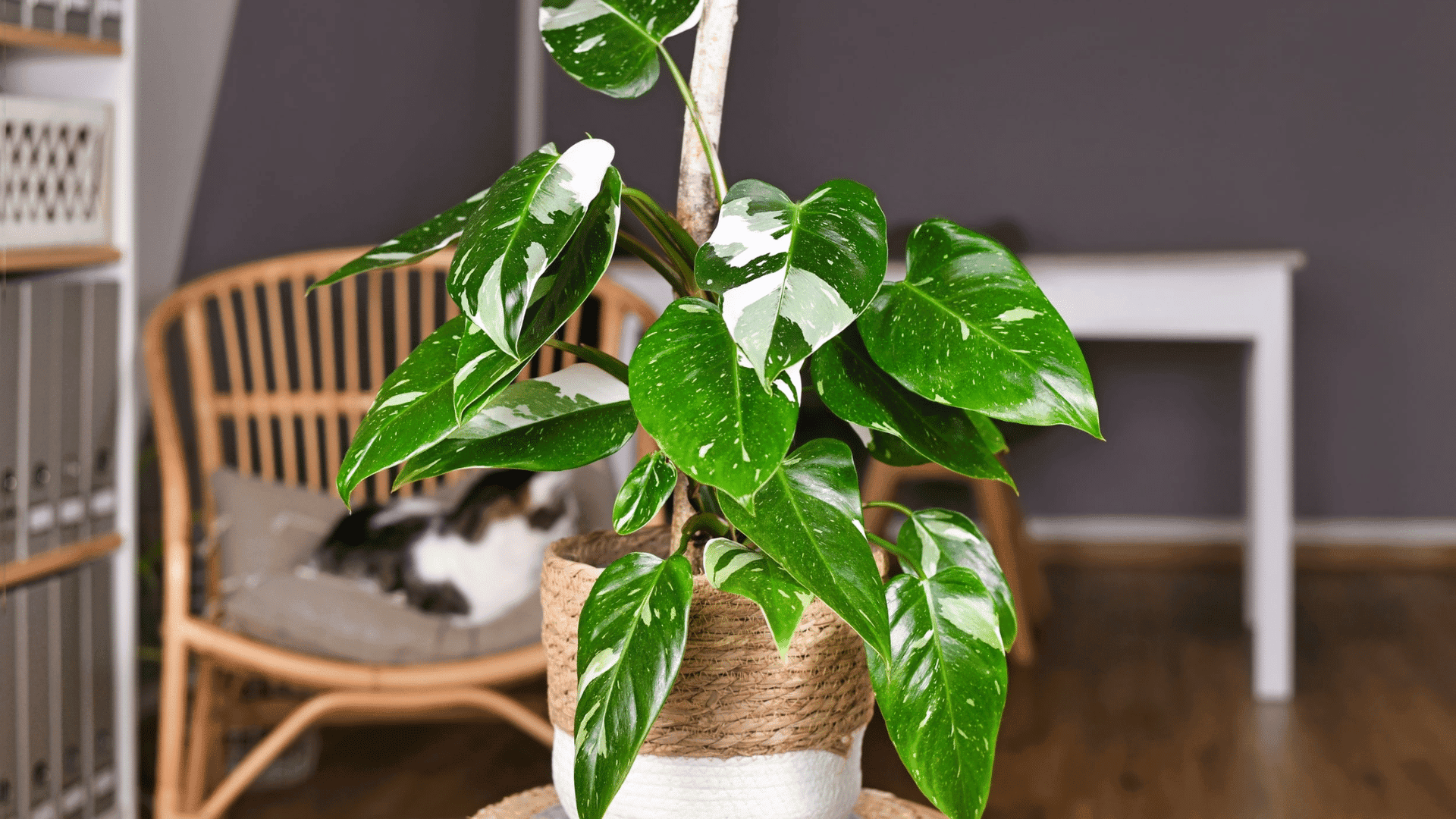
My heart-leaf philodendron grows from my high shelf, with vines that hang down like a green curtain. The leaves are shaped like hearts and stay green even when I forget to water them. Philodendrons come in many varieties—climbing types with heart-shaped leaves, upright types with large split leaves, and specialty types with colorful or patterned foliage. They’re native to tropical rainforests where they grow in dappled light under tree canopies.
Why it’s great for offices:
- Nearly impossible to kill with neglect
- Adapts to low, medium, or bright indirect light
- Can be trained to climb a moss pole or a small trellis
- Removes toxins like formaldehyde from office air
12. Aglaonema
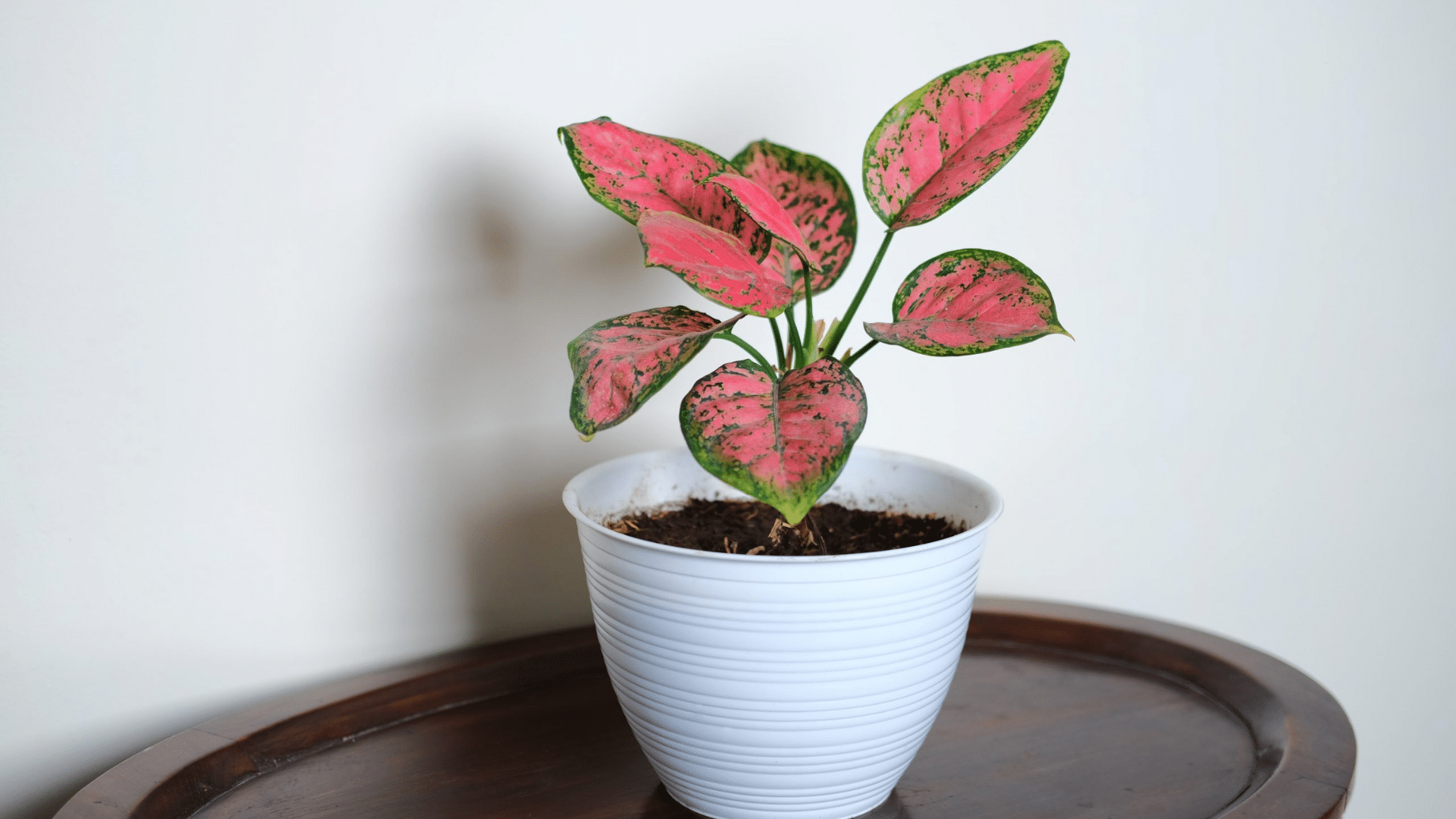
I have a Chinese evergreen with green and silver leaves. It grows so slowly that it stays the perfect size for my side table. I water it just once every two weeks, and it keeps looking fresh. Aglaonemas come in a variety of colors and patterns, featuring silver, red, pink, and cream variegation on dark green leaves.
Why it’s great for offices:
- Thrives in low light conditions, including fluorescent lighting
- Stays compact and doesn’t outgrow its space
- Rarely have problems with pests or diseases
13. Boston Fern
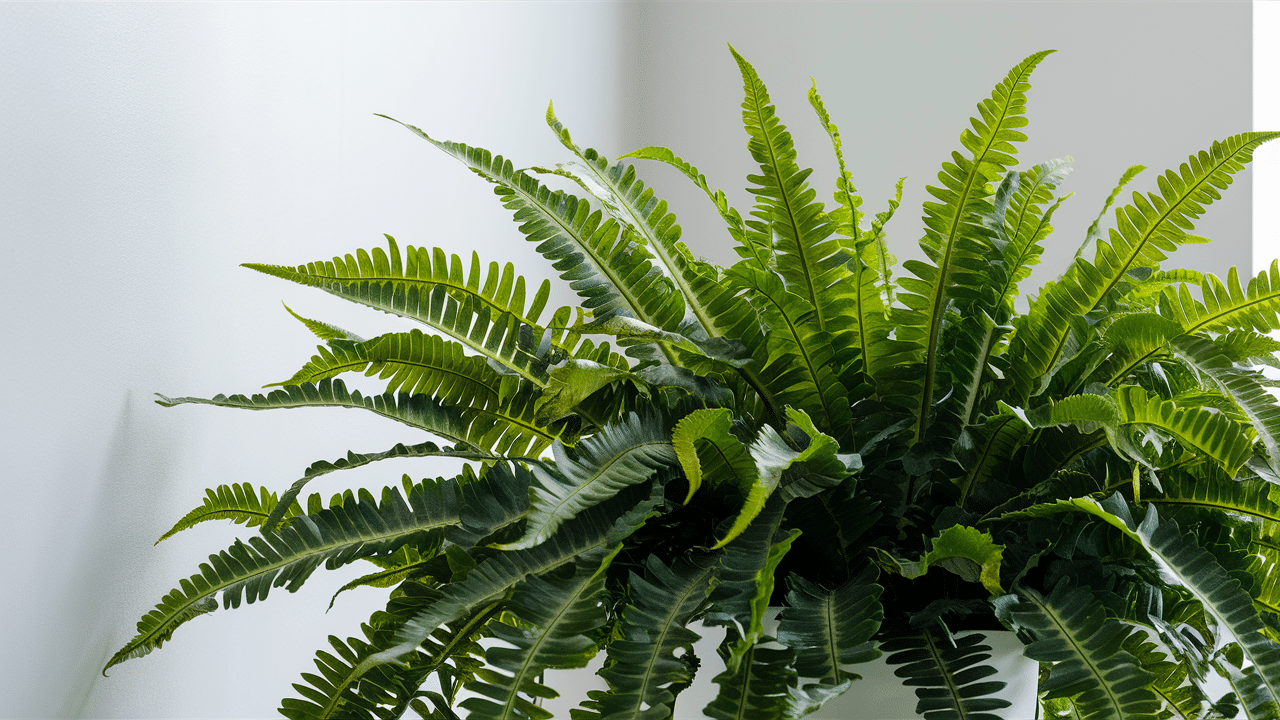
My Boston fern sits in our small office kitchen where it gets steam from the kettle. Its feathery fronds add a soft touch to the room. This plant requires more attention than others, but its lush appearance makes it worthwhile. Boston ferns have been popular houseplants since Victorian times.
Why it’s great for offices:
- Adds a soft, graceful texture unlike most office plants
- Removes more formaldehyde than any other plant tested by NASA
- Perfect for kitchens, bathrooms, or areas near water coolers
- Does well in north-facing windows with indirect light
14. Dracaena
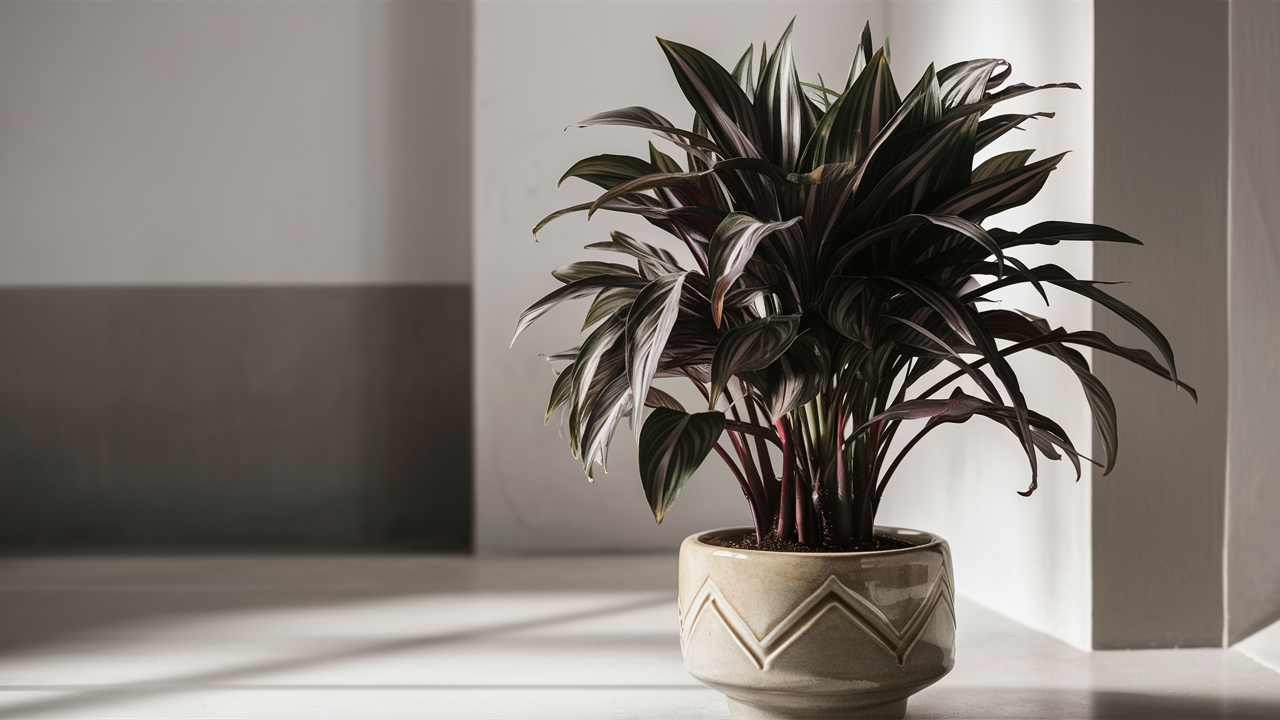
I have a Dracaena, commonly known as a corn plant, that resembles a mini palm tree. It grows slowly and stands in the corner of my office. The striped leaves fan out from the top, making a statement without requiring much care. Dracaenas come in many varieties, including the corn plant, dragon tree, and lucky bamboo.
Why it’s great for offices:
- Handles low humidity and irregular watering
- Available in various sizes from desktop to floor plants
- Slow growth means it won’t quickly outgrow its space
15. Calathea
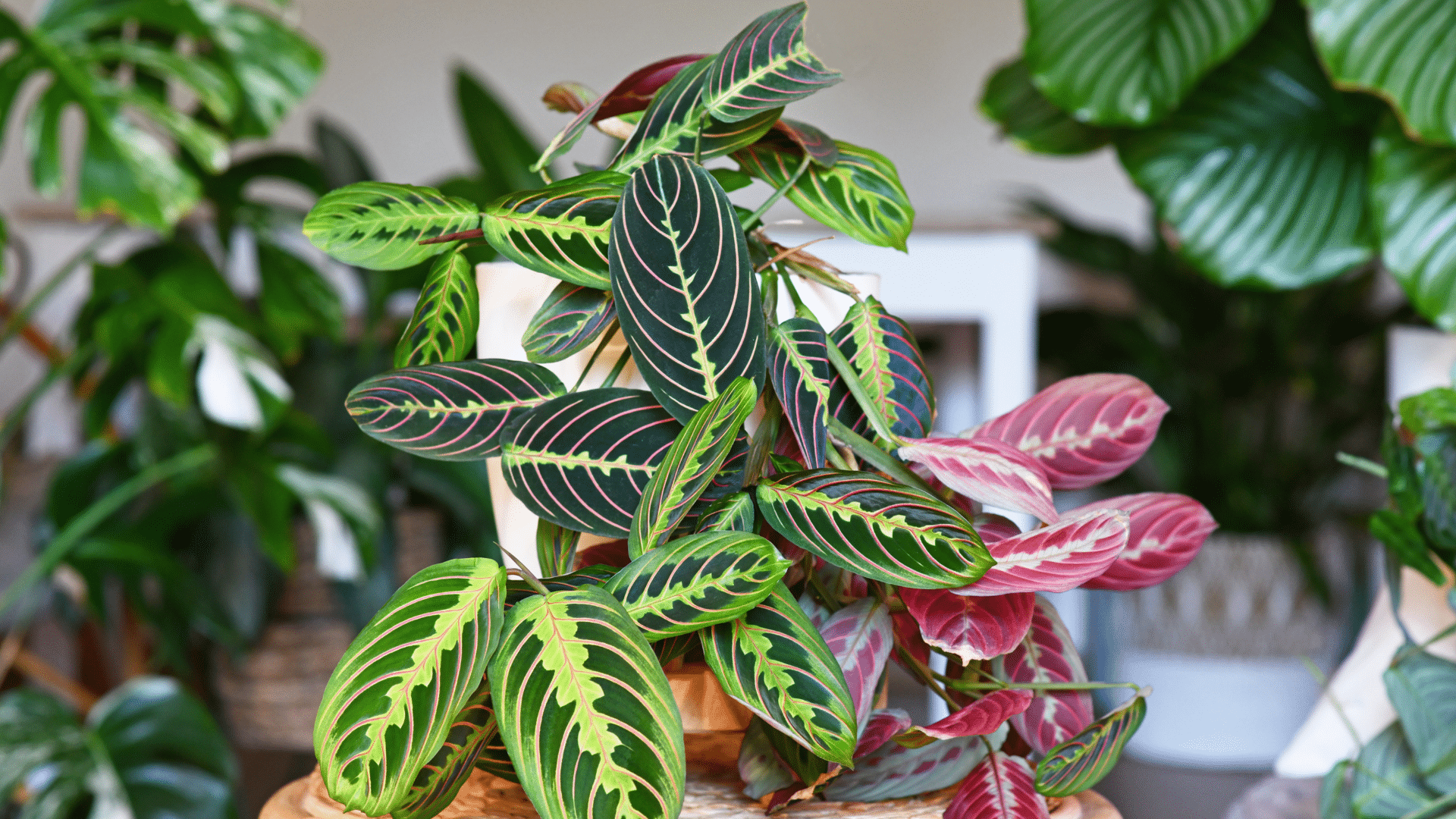
My calathea fascinates visitors because its leaves move up at night and down during the day. The leaves have striking patterns that resemble someone’s handiwork. It requires more water than my other plants, but it adds a great deal of visual interestThey have some of the most striking leaf patterns in the plant world.
Why it’s great for offices:
- Thrives in medium to low indirect light
- Helps increase humidity in dry office environments
- Shows when the air is too dry by developing crispy leaf edges
16. Fittonia
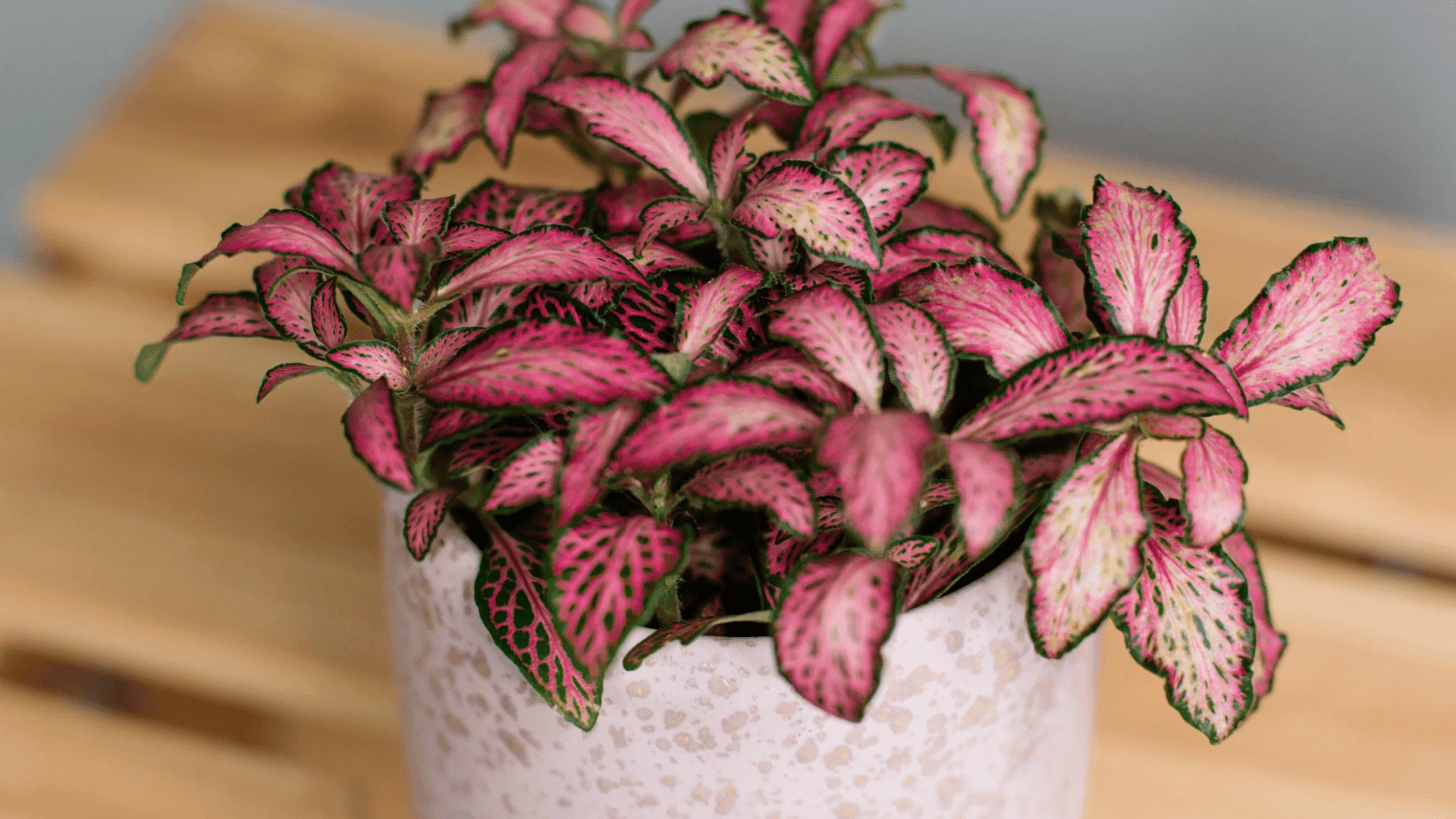
I keep a small nerve plant on my desk in a glass bowl. Its green leaves with pink or white veins look like tiny works of art. I mist it with water twice a week to keep it happy. Fittonias are small plants (rarely growing taller than 6 inches) native to the rainforests of Peru. Their claim to fame is the striking network of veins that contrast against the leaf color.
Why it’s great for offices:
- Small size makes it perfect for desktops and tight spaces
- Works well in glass containers and terrariums
- Let you know when it needs water by dramatically wilting
17. English Ivy
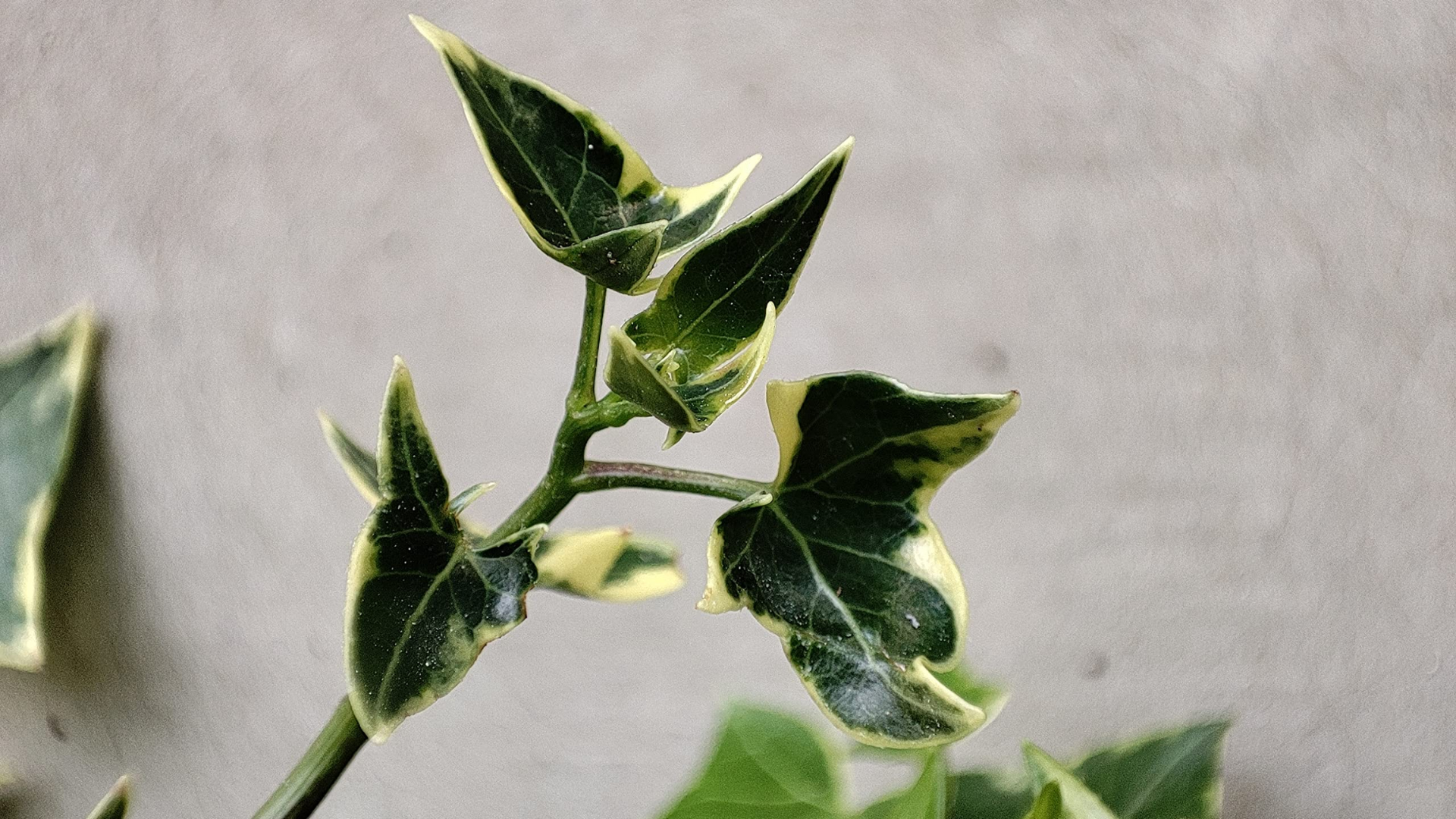
My English ivy started in a pot, but now it climbs up a small trellis on my wall. Its pointed leaves come in green or variegated patterns. It grows fast and makes my office wall look like a garden spot. English ivy (Hedera helix) is an adaptable vine that’s been grown indoors since ancient times. It can grow as a trailing plant, a climber, or be trained into topiary shapes. The classic variety has dark green lobed leaves, but many cultivars offer variegated patterns.
Why it’s great for offices:
- Grows in low to bright indirect light
- Can be trained to grow in any direction
- Reduces airborne mold particles by up to 60%
18. Cactus
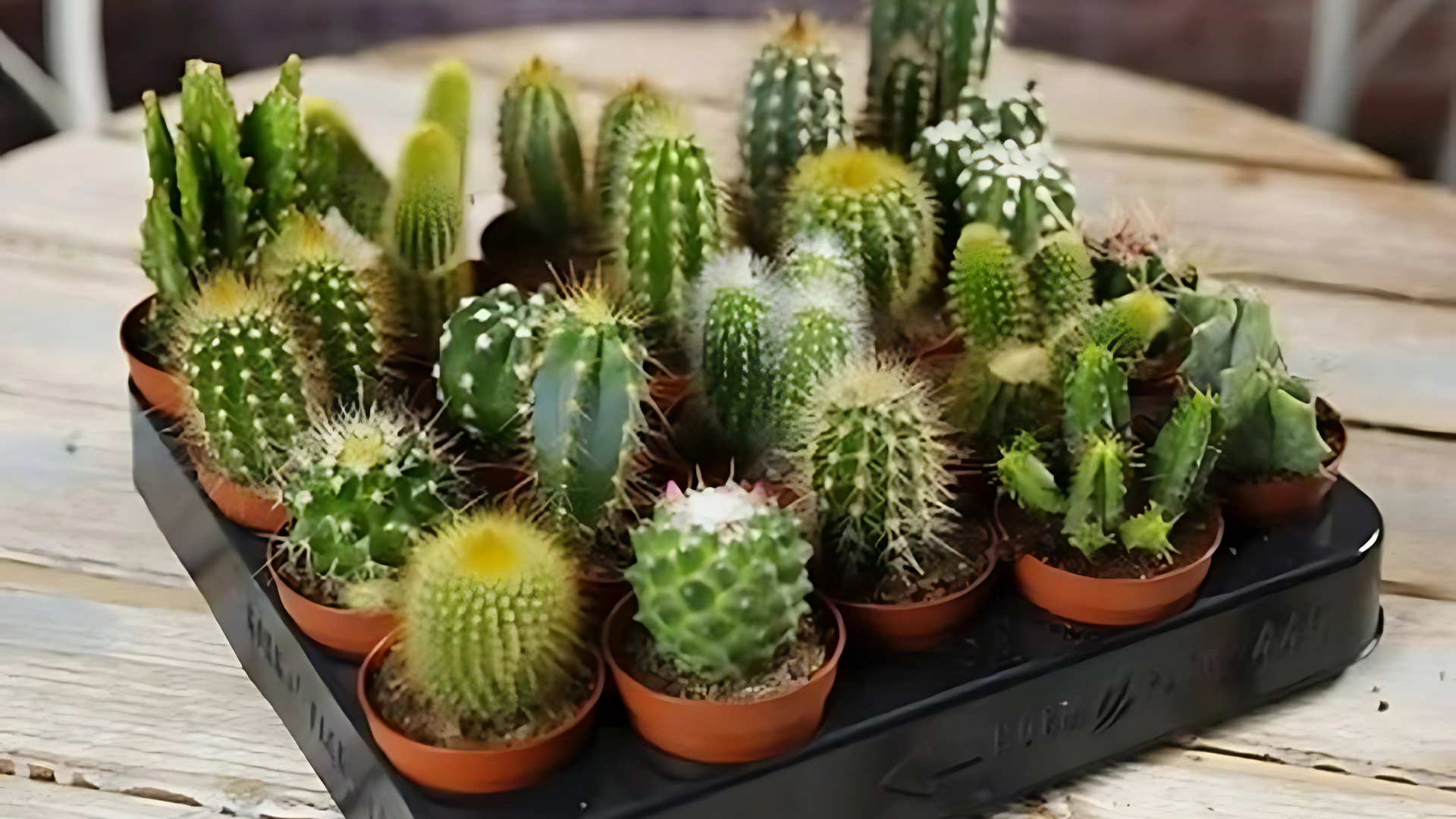
I have three small cacti on my windowsill that I water just once a month. They come in fun shapes and sizes. Some even bloom with tiny flowers once a year, which always amazes me. Cacti store water in their stems, allowing them to go weeks or months without water.
Why it’s great for offices:
- Requires minimal care, just bright light and occasional water
- Some varieties produce colorful flowers with minimal care
- Doesn’t outgrow its container for years
19. Mini Monstera
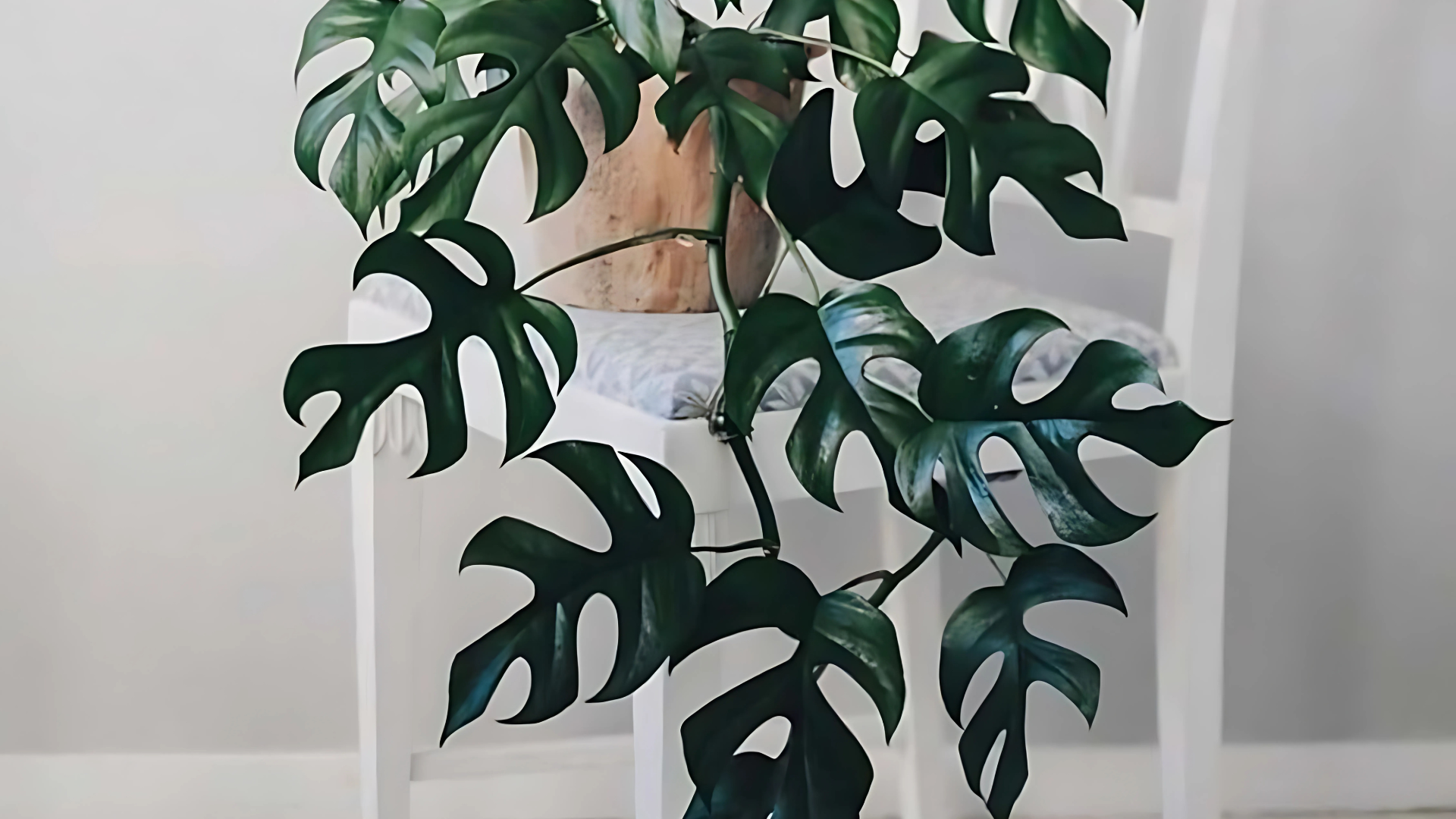
My mini monstera looks like its famous bigger cousin, but stays small enough for my shelf. The split leaves add a tropical feel to my office. It climbs up a small moss pole, making my space feel like a tiny jungle. Often called the “mini monstera,” Rhaphidophora tetrasperma is actually a different genus, but it has similar split leaves.
Why it’s great for offices:
- Adapts to moderate indoor light conditions
- Can be trained up a small support or allowed to trial
- Creates dramatic shadows when placed near a light source
20. Lavender
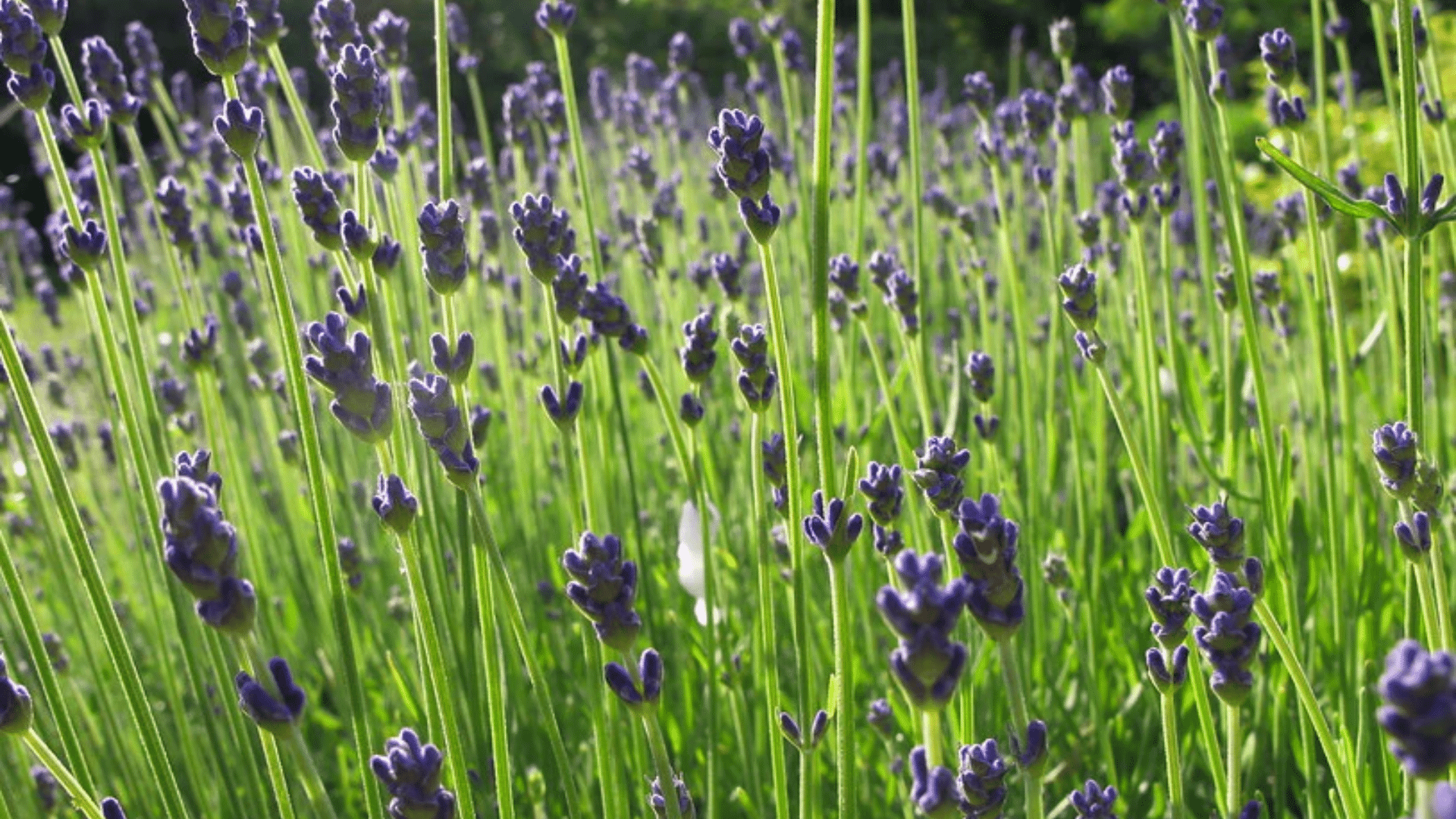
I keep a small pot of lavender near my south-facing window. When I feel stressed, I touch the leaves to release the calming smell. It needs more sun than most office plants, but the scent makes it worth finding a bright spot. Lavender is a Mediterranean herb characterized by its gray-green, needle-like leaves and purple flower spikes. Why it’s great for offices:
- Provides aromatherapy benefits that reduce stress and anxiety
- Helps improve focus and concentration when you smell it
- It may help you sleep better if you’re working long hours
21. Fiddle Leaf Fig
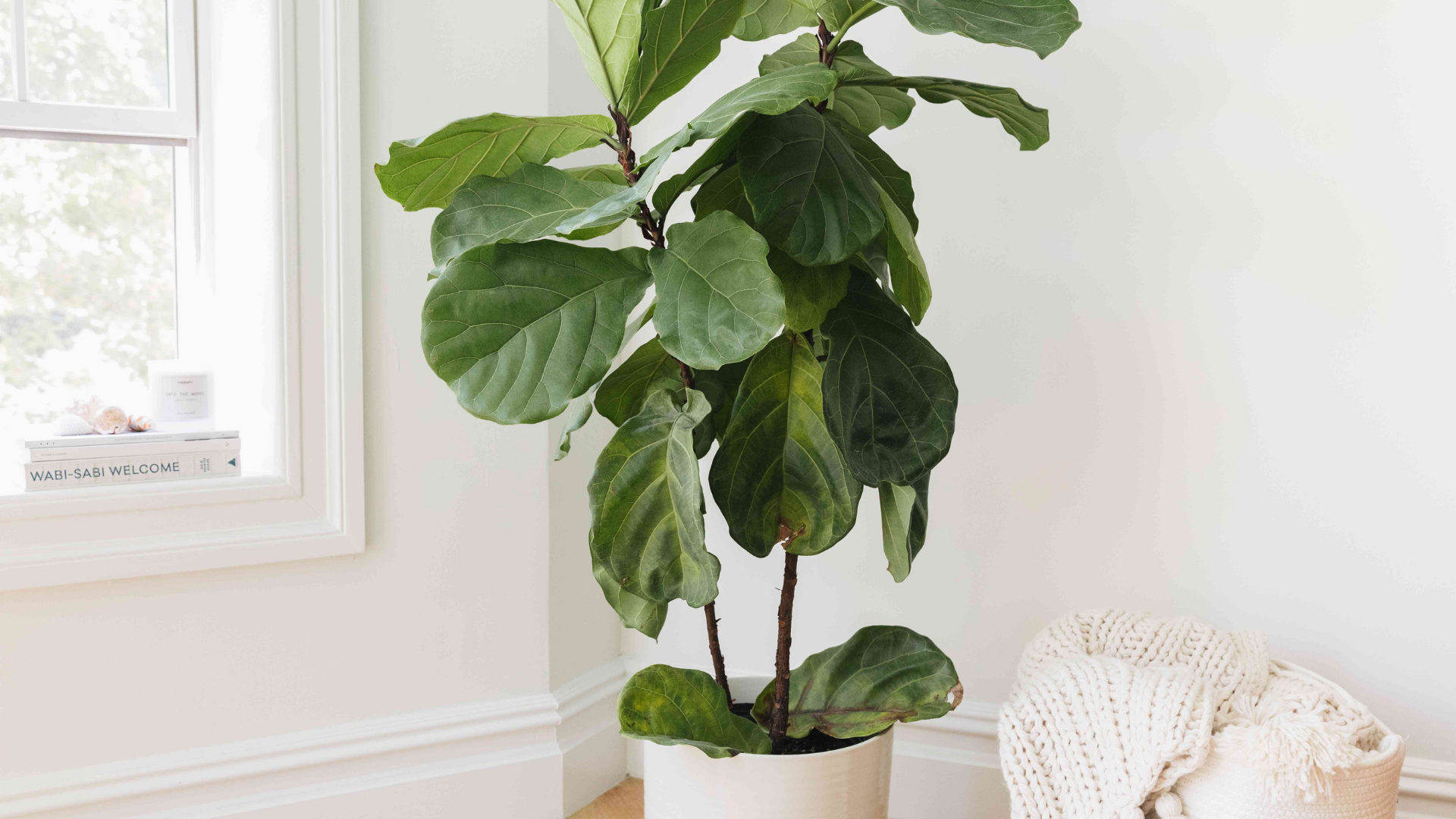
I have a small fiddle-leaf fig by my window. Its big, violin-shaped leaves make a bold statement. This plant can be a bit fussy about its spot, but once it’s happy, it adds a modern touch to any office. The fiddle leaf fig (Ficus lyrata) has become one of the most popular indoor plants in recent years. While they can grow very tall (up to 10 feet indoors), younger plants or dwarf varieties are often more suitable for office environments.
Why it’s great for offices:
- Grows slowly enough to maintain its size with occasional pruning
- Shiny leaves reflect light and brighten the space
- Conveys a trendy, modern aesthetic in professional settings
22. Succulent Mix
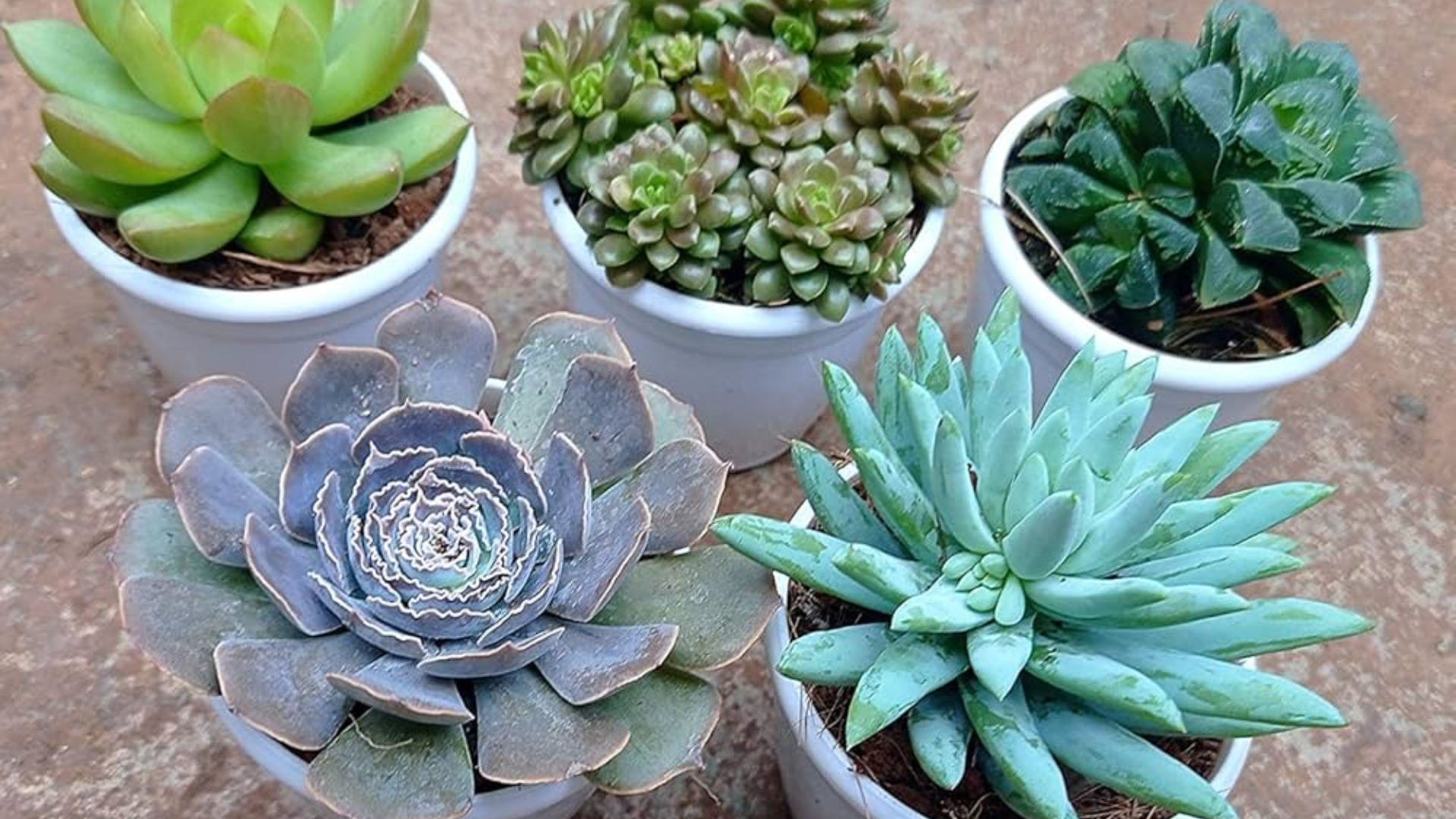
I have a small bowl with five types of succulents on my desk. Each one has a different shape and color. They grow so slowly that they stay desk-sized for years. I water them just once every two weeks. Succulents are plants adapted to store water in their leaves, stems, or roots.
Why it’s great for offices:
- Survives long periods without water during holidays
- Needs minimal soil and can grow in tiny containers
- Stays compact for years without repottin
23. Air Plants
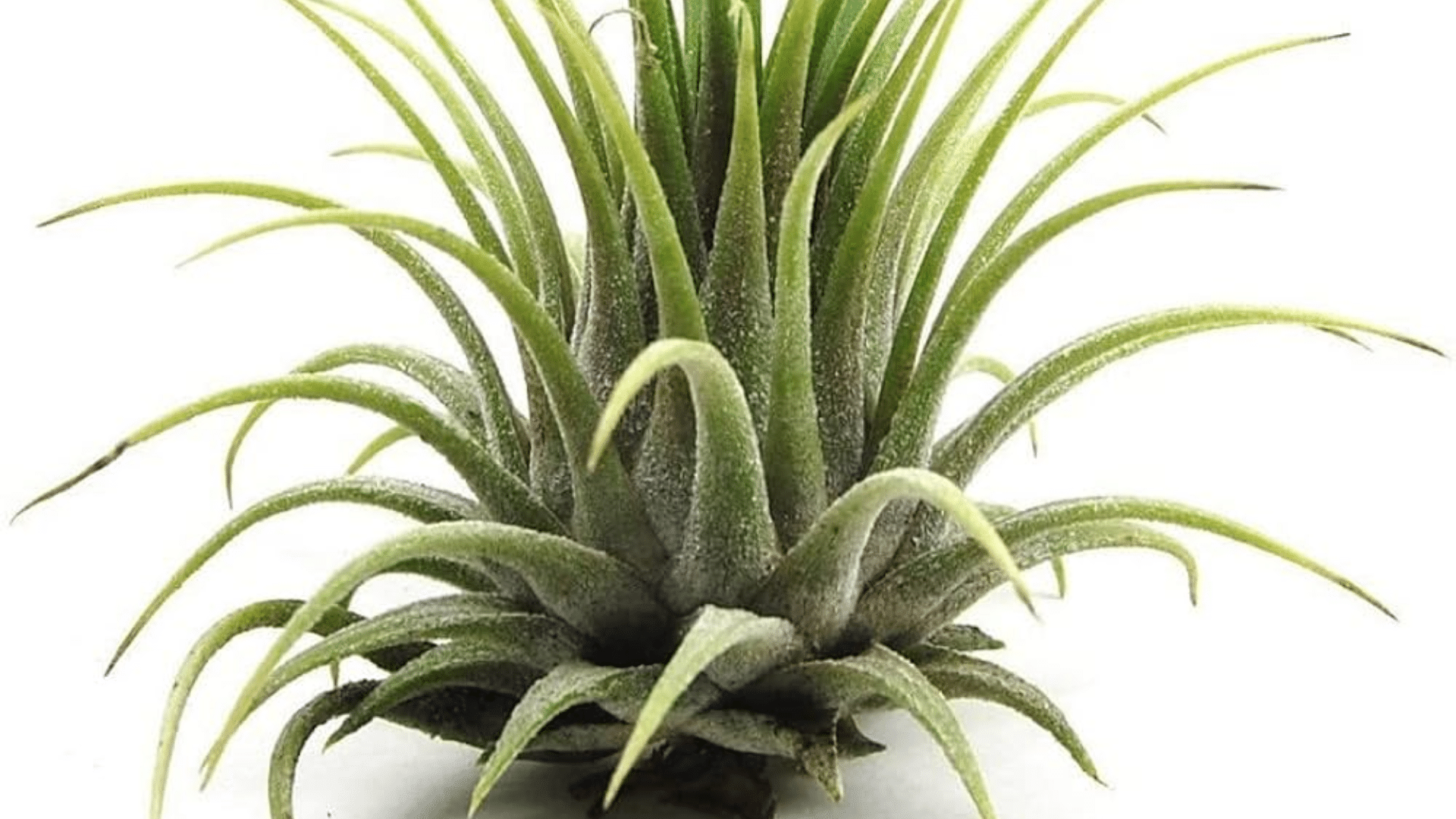
My air plants sit in small glass globes hanging from my bookshelf. They don’t need soil at all! I take them down once a week for a quick soak in water. They look like little green aliens and make great conversation starters. Air plants (Tillandsia species) absorb water and nutrients through their leaves, rather than their roots.
Why it’s great for offices:
- Needs just a 30-minute water soak once a week
- Doesn’t attract bugs or create a mess like soil plants
- Adds unusual texture, unlike any other indoor plant
24. Mini Palm
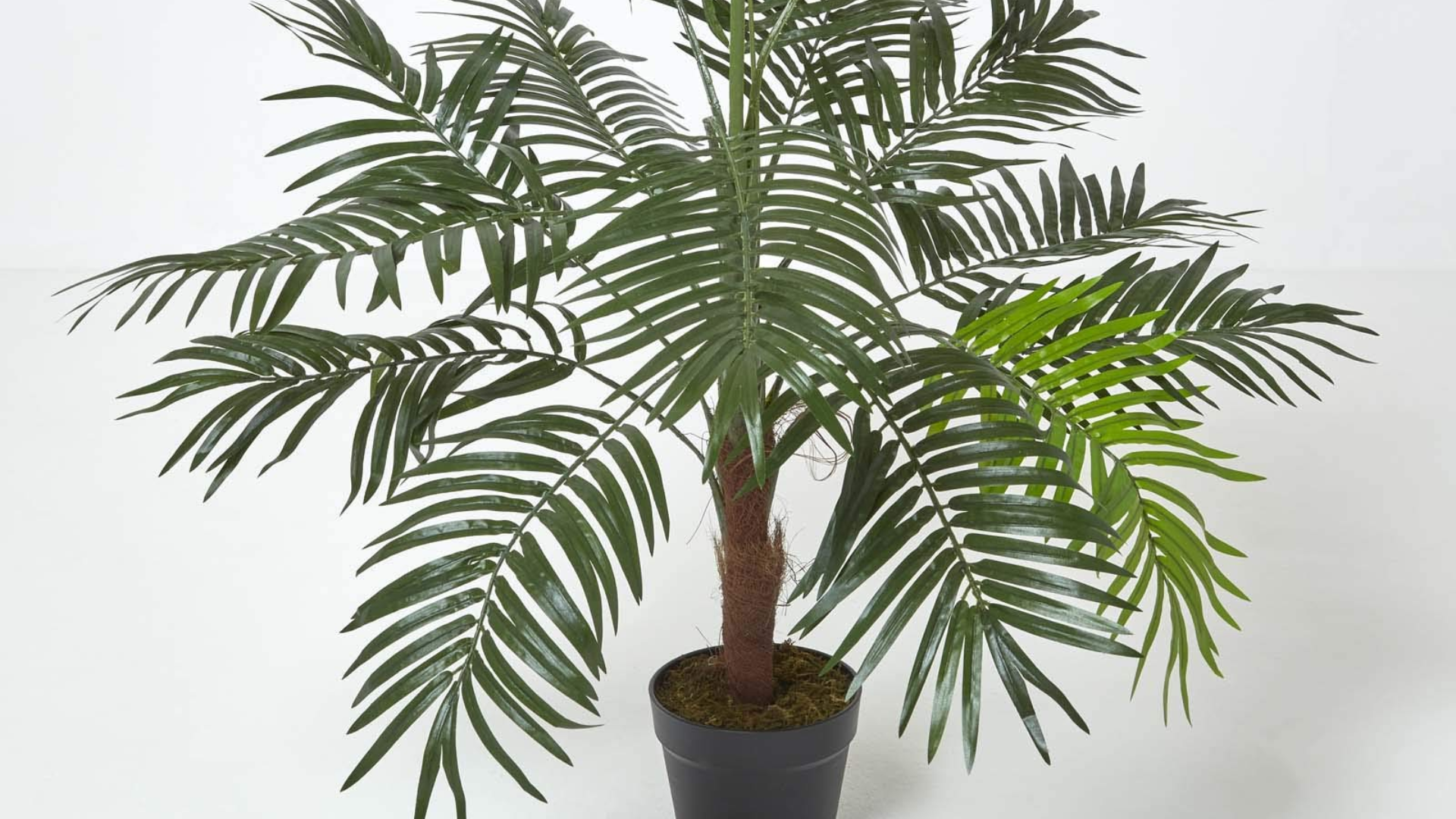
I have a parlor palm that stands about 18 inches tall. Its feathery fronds make me feel as though I’m working in a more tropical setting. It grows well in normal office lighting and only requires watering when the top of the soil feels dry. The parlor palm (Chamaedorea elegans) has been a popular indoor plant since Victorian times. It’s a slow-growing, compact palm that rarely exceeds 4 feet indoors. Unlike many palms, it tolerates lower light and doesn’t need a huge pot.
Why it’s great for offices:
- Doesn’t drop leaves or create a mess like some palms
- Handles dry air better than many tropical plants
- Low maintenance, with watering needed only when the soil dries
25. Ponytail Palm
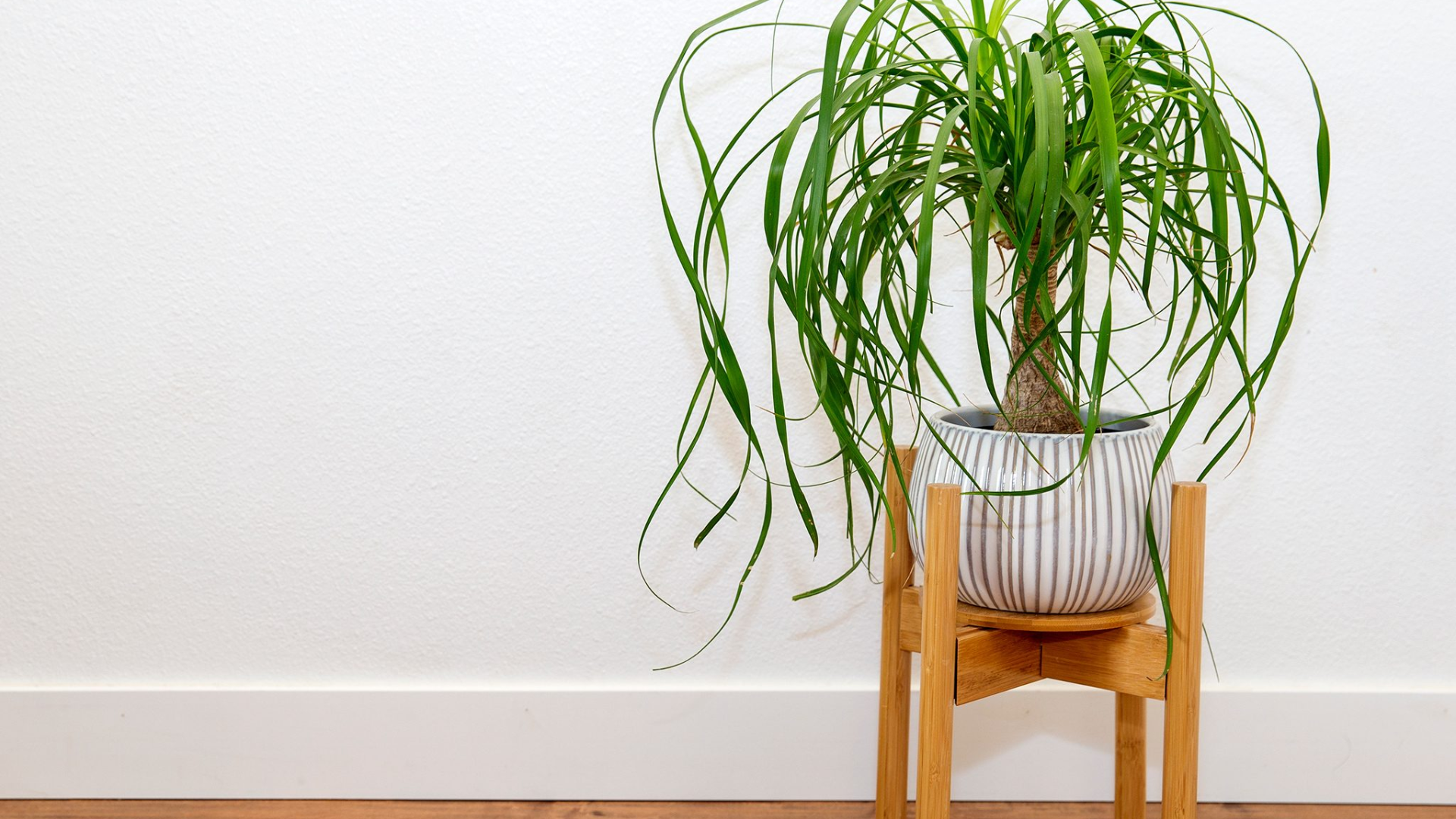
My ponytail palm has a thick base with long, slender leaves that curve outward from the top, resembling a ponytail. It’s actually not a palm at all but a type of succulent. It stores water in its fat trunk and rarely needs a drink. Despite its tropical look, it’s drought-tolerant and can go weeks without water, making it perfect for forgetful caretakers.
Why it’s great for offices:
- Rarely outgrows its space due to a slow growth rate
- Doesn’t drop leaves or create a mess
- Adds a whimsical touch to serious office environments
26. Bamboo Palm
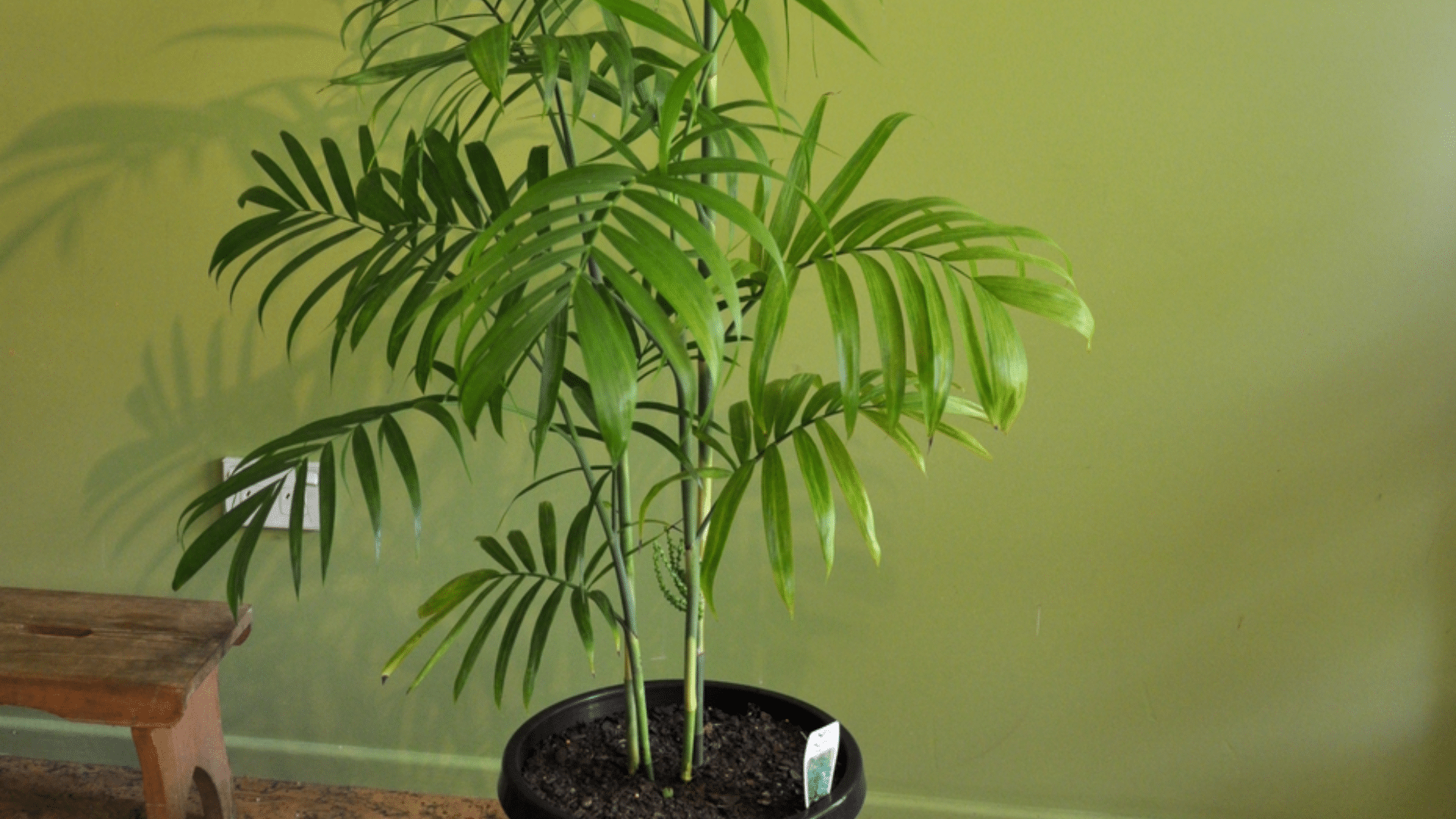
I have a bamboo palm in the corner that adds a lush look to my office. It has many thin stems with feathery, leafy foliage. It grows well even in low light and helps filter the air I breathe all day. The bamboo palm (Chamaedorea seifrizii) isn’t actually bamboo but gets its name from its multiple reed-like stems. It produces clusters of arching fronds, creating a full and lush appearance. This palm is one of the best for air purification, removing toxins like formaldehyde and benzene.
Why it’s great for offices:
- Ranked as a top air-purifying plant by NASA studies
- Tolerates low light conditions better than most palms
- Maintains humidity in dry office environments
27. Croton
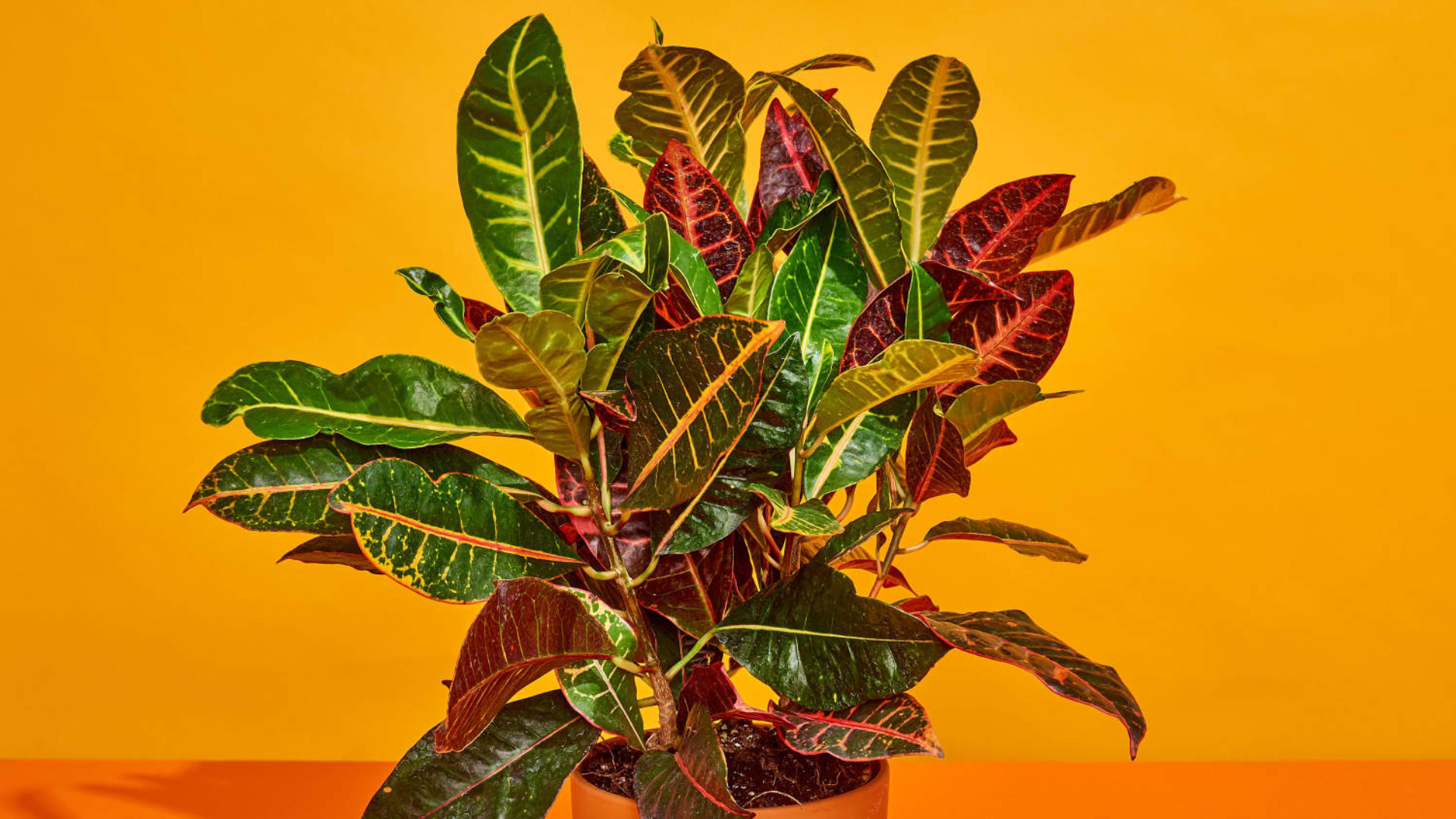
My croton adds a pop of color with its red, orange, and yellow leaves. It sits close to my window, as it needs good light to maintain its bright colors. It’s like having a living work of art in my office. Crotons (Codiaeum variegatum) are tropical plants known for their boldly colored foliage. The leaves can be oval, twisted, or oak-shaped, with splashes of yellow, orange, red, and even purple. The colors intensify with increased light, making them ideal for brightening a sunny office space.
Why it’s great for offices:
- Adds vibrant colors without needing flowers
- Functions as a living color palette in creative workspaces
- Creates a focal point in otherwise neutral offices
28. African Violet
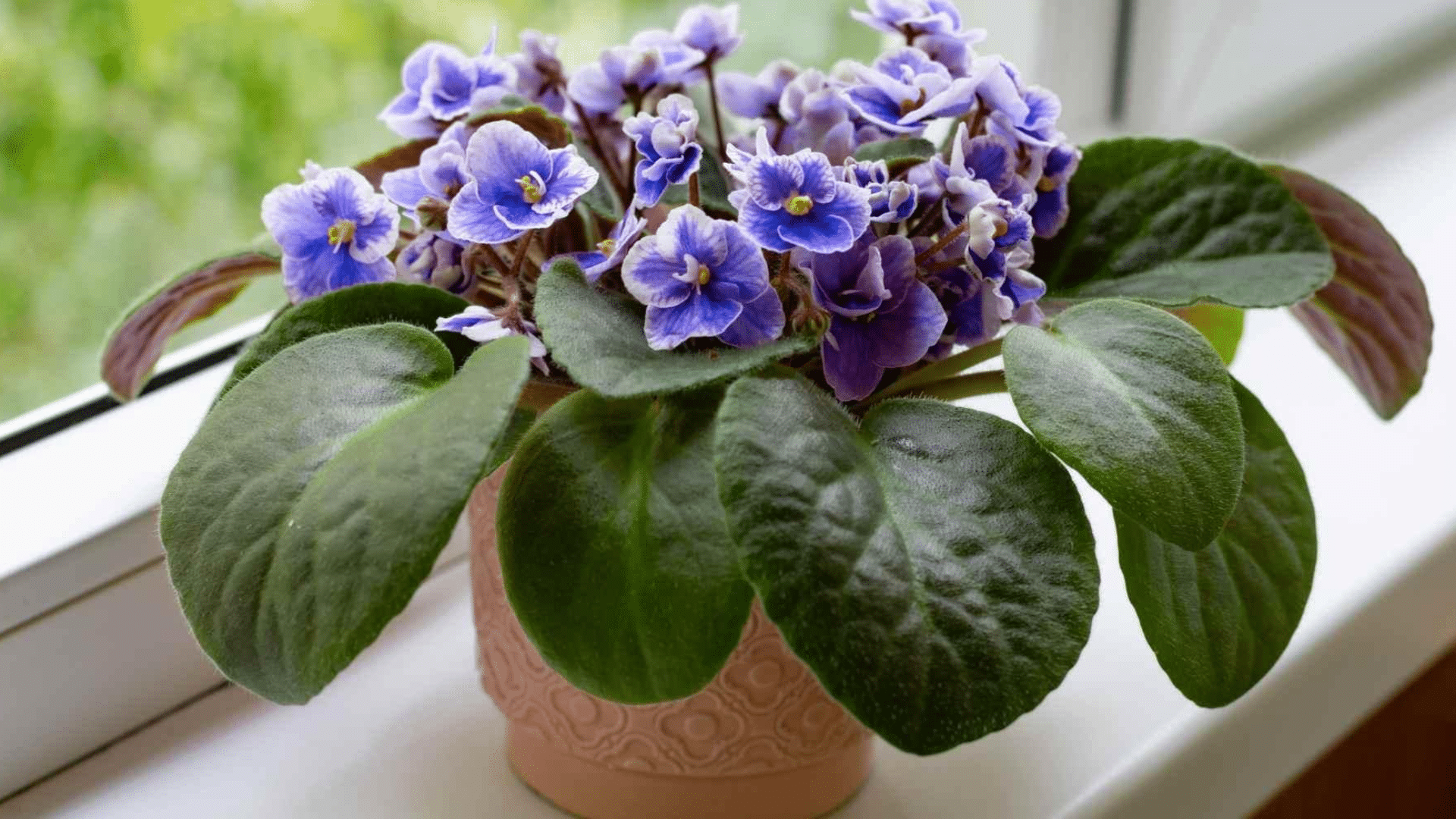
I keep African violets on my windowsill for their constant purple, pink, or white flowers. They’re small enough for even the tiniest desk.Their velvety, round leaves form a rosette pattern, and they’re one of the few houseplants that can bloom continuously indoors with proper care. The flowers come in shades of purple, blue, pink, white, and even bicolors.
Why it’s great for offices:
- Blooms year-round with minimal care
- Stays small and compact for many years
- Grows well under fluorescent lighting
29. Oxalis (Purple Shamrock)

My purple oxalis has triangle-shaped purple leaves that fold up at night. It’s like having a pet that moves! The leaves spread out during the day and close up at night. It also grows tiny pink flowers. Oxalis triangularis (purple shamrock) features distinctive triangular leaves in deep purple or burgundy hues. It’s technically a bulb plant that goes through active and dormant periods.
Why it’s great for offices:
- Provides entertainment with daily leaf movements
- Adds an unusual purple color not common in office plants
- Produces delicate pink flowers periodically
30. Kalanchoe
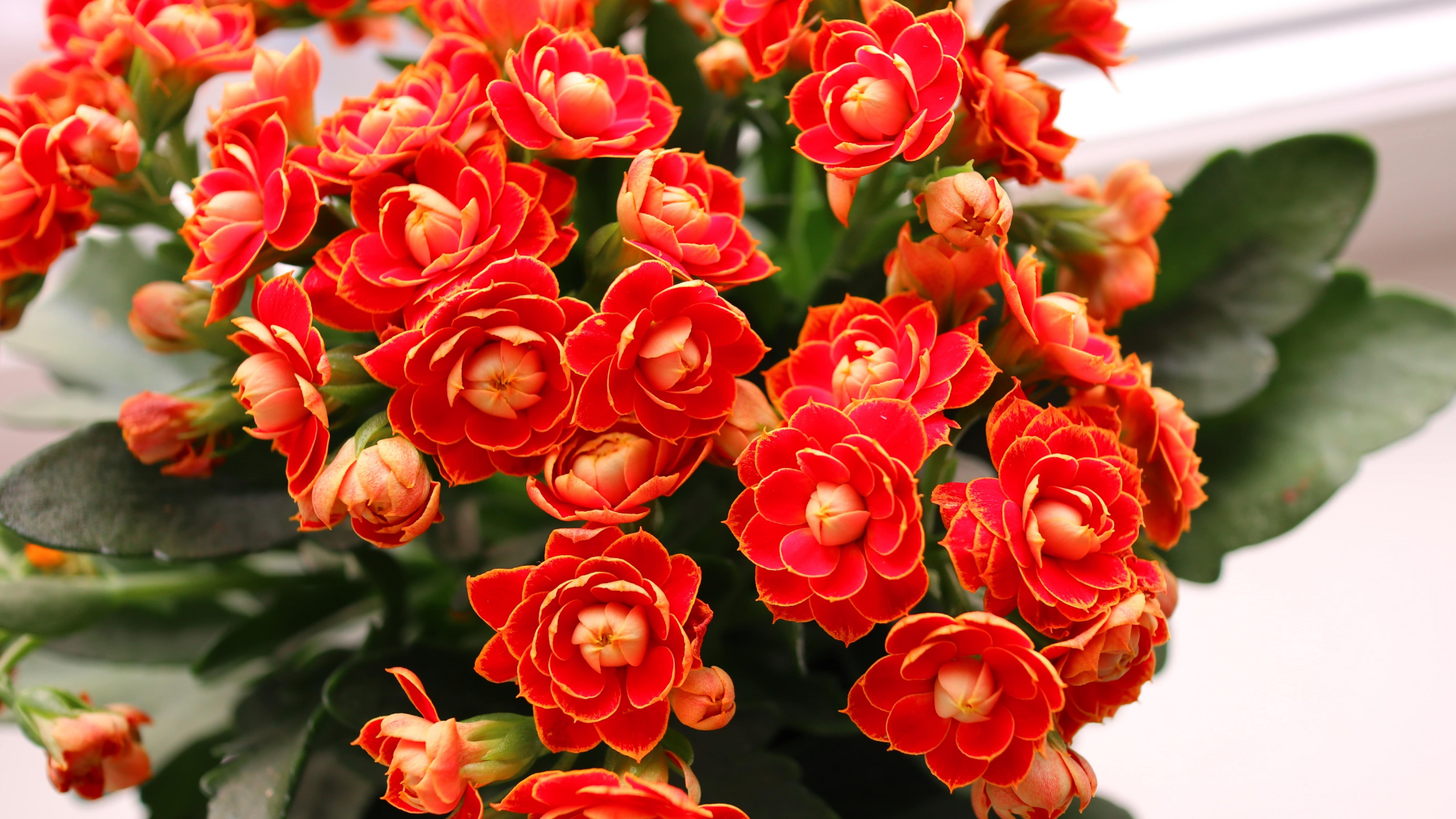
I have a kalanchoe that blooms with small red flowers for months at a time. It’s a succulent, so it rarely needs water. The thick leaves remain green throughout the year, and the flowers add a lovely touch of color. Kalanchoe blossfeldiana is a flowering succulent native to Madagascar. It produces clusters of small, long-lasting flowers in bright red, orange, yellow, or pink.
Why it’s great for offices:
- Flowers for 2-6 months with minimal care
- Can be encouraged to bloom again with light management
- Doesn’t drop flower petals and create a mess
31. Peperomia
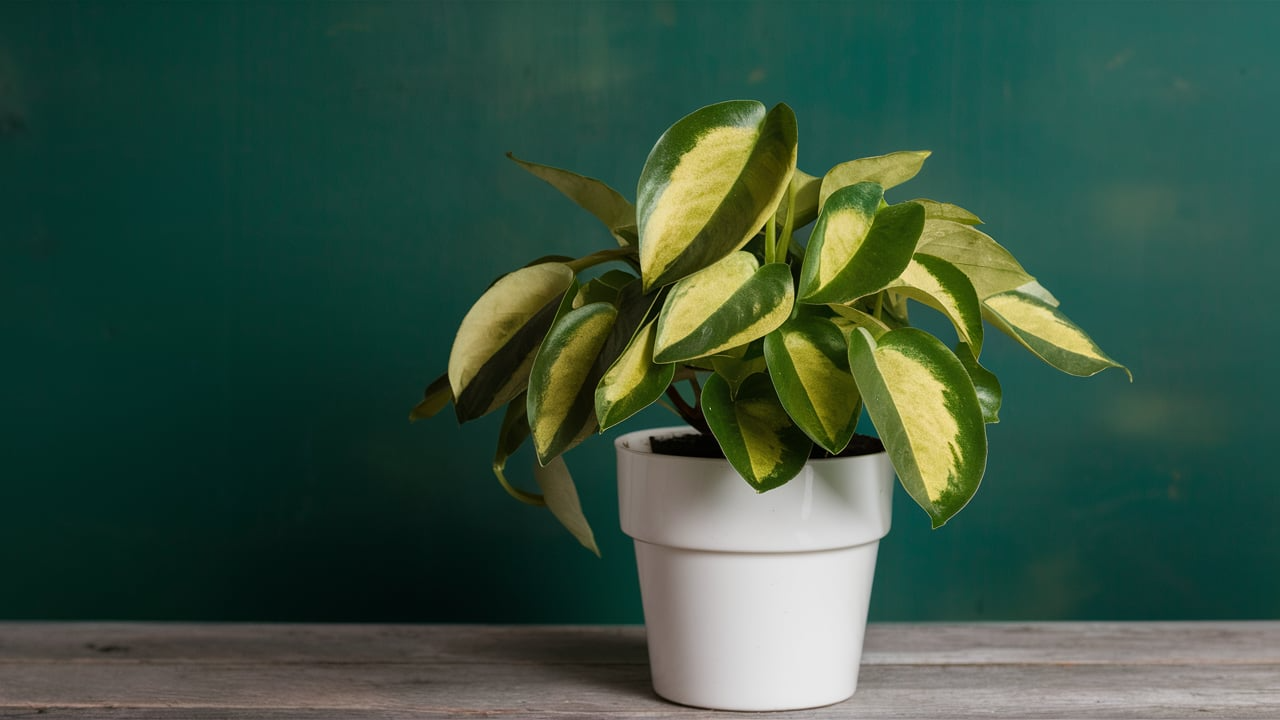
My watermelon peperomia has round leaves with stripes that look like a watermelon rind. It stays small and compact on my desk. This plant comes in various types, each with distinct leaf shapes and colors. Peperomias are a diverse genus with over 1,000 species, all of which remain relatively small in size.
Why it’s great for offices:
- Stays small and compact for years
- Tolerates low to medium light conditions
- Available in countless leaf shapes, patterns, and colors
- Rarely bothered by pests or diseases
32. Anthurium
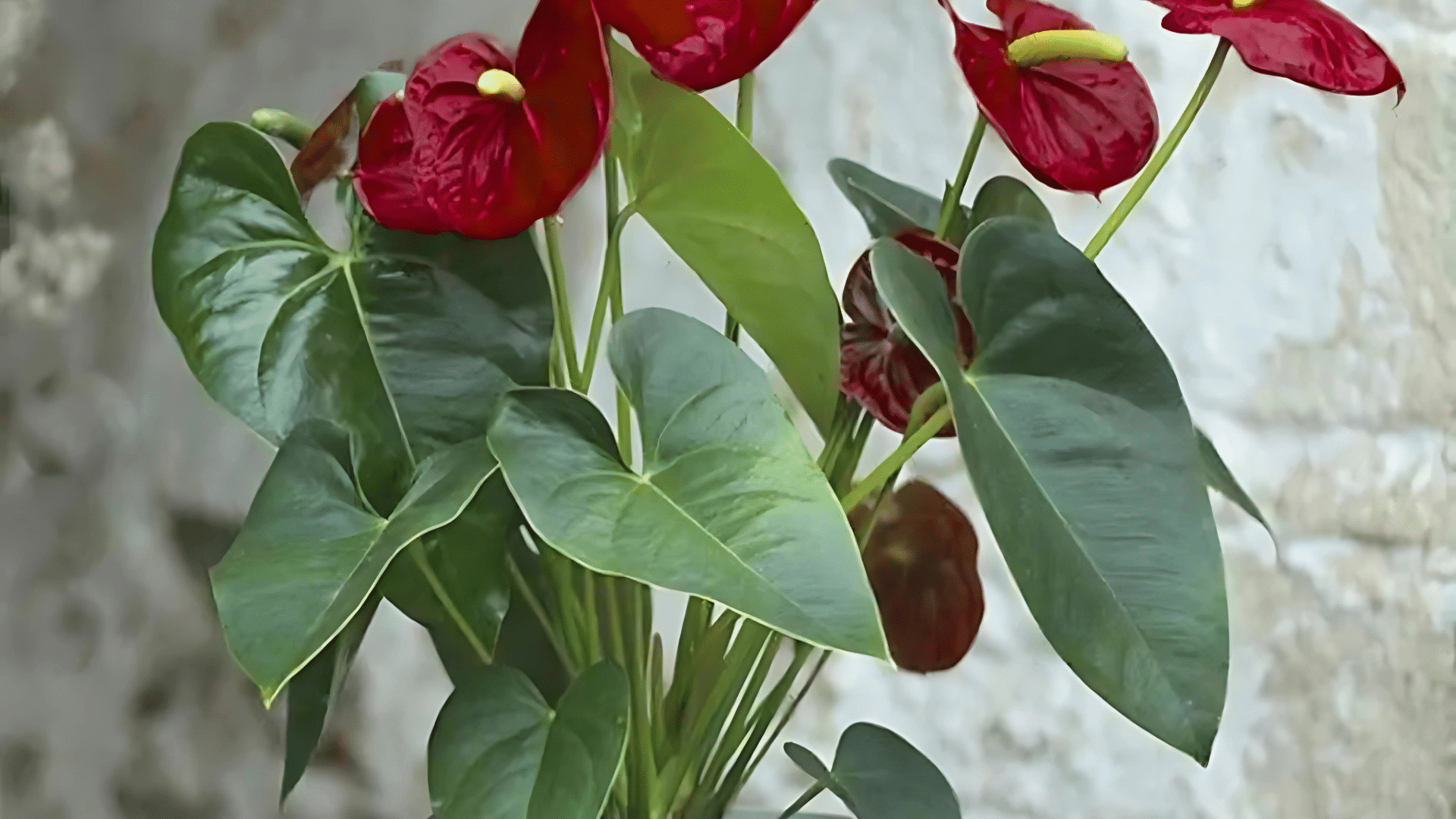
I splurged on an anthurium for its bright red, heart-shaped flowers, which last for months. The shiny flowers look almost fake! It sits on my desk where clients can see it. It requires more water than some office plants, but it brings a lot of color. Anthuriums are tropical plants known for their long-lasting, waxy “flowers,” which are actually modified leaves called spathes. They commonly come in red, but pink, white, purple, and orange varieties are also available.
Why it’s great for offices:
- Provides color that lasts 2-3 months per bloom
- Blooms throughout the year with proper care
- Makes an impressive gift or client-facing plant
How Plants Can Help You Feel Better At Work
I’ve noticed real changes since adding plants to my workspace:
My air feels cleaner. Many office plants filter out common air pollutants.
I feel less stressed. The color green has a calming effect on the brain.
My focus has improved. Having something living to care for gives my mind brief moments of respite.
My office looks better. Plants add texture, color, and life to boring office spaces.
I take more pride in my workspace now that it feels more personal.
Studies show that offices with plants have workers who feel happier and experience fewer illnesses. Even just one plant can make a difference.
Tips To Keep Office Plants Healthy
Even the toughest plants need some basic care:
- Don’t overwater. More office plants die from too much water than from too little. Check the soil with your finger before watering.
- Dust the leaves. Wipe plant leaves with a damp cloth once a month to allow them to breathe.
- Watch for pests. Check under leaves for tiny bugs, especially if you bring plants from home.
- Use the right pot size. A pot that’s too big leads to root rot. Start small and size up later.
- Rotate plants. Turn them every few weeks so that all sides receive light evenly.
- Skip the ice cubes. Water at room temperature is best for most plants.
If a plant starts to look bad, don’t give up! Remove any dead leaves and assess whether you need to adjust your care routine.
Conclusion
Adding plants to my workspace made a significant difference. My office went from boring to fresh and alive. The green touches make me smile when I walk in each morning. I feel more focused, and the air seems cleaner.
Start with just one tough plant, such as a snake plant or ZZ plant. These hard-to-kill options build your confidence. Once you see how easy it can be, you’ll want more. The best part? Plants give you quick mental breaks during busy days. When I water my plants or wipe their leaves, my mind gets a chance to reset.
You don’t need a green thumb—match the right plant to your specific office conditions. Soon, you’ll wonder how you managed to work so long in a space without these green friends!


